Buenos Aires to Iguazu
December, 2004
December 12th
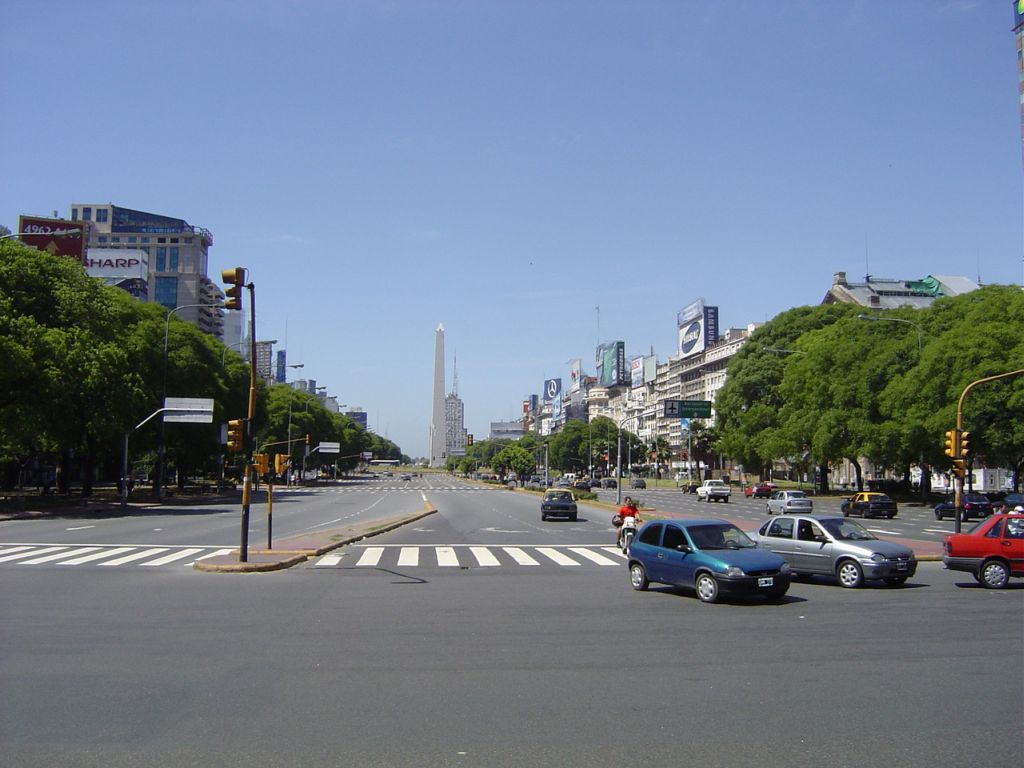

Elsa is inspecting the Opera House
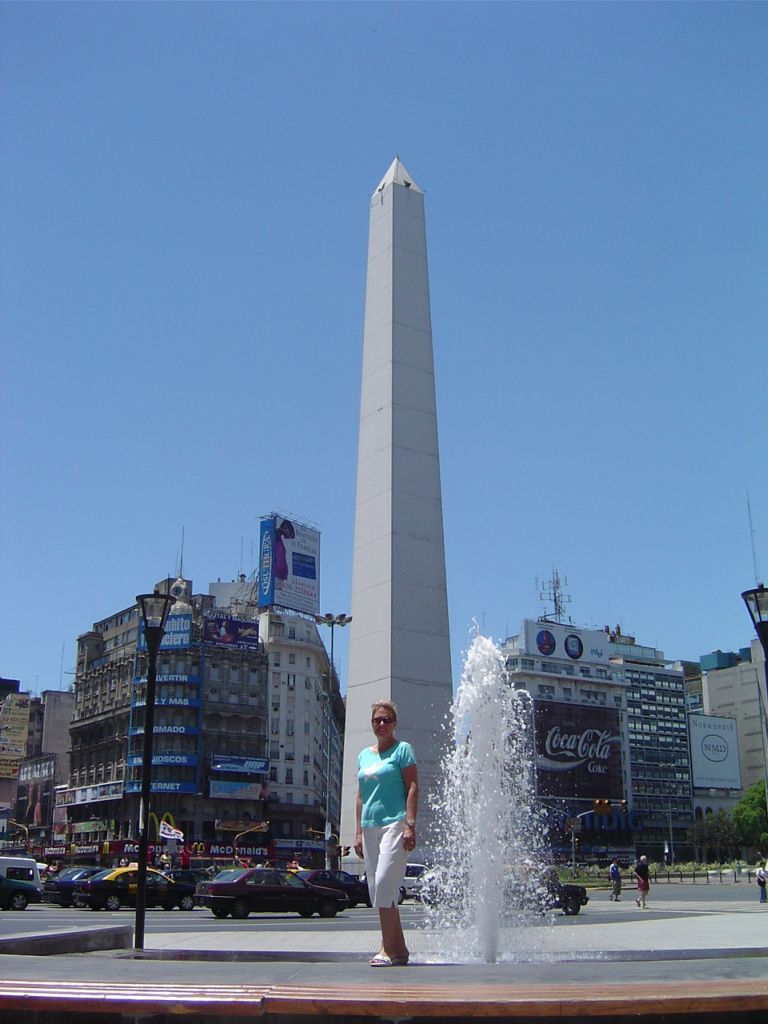
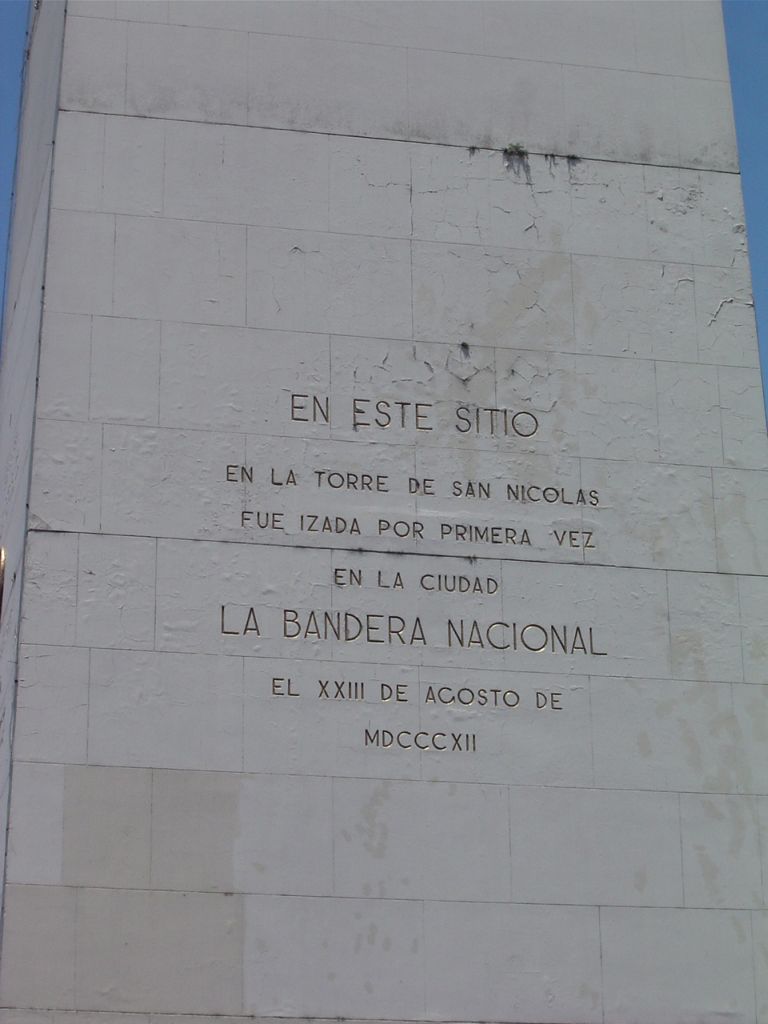
23rd of August, 1812
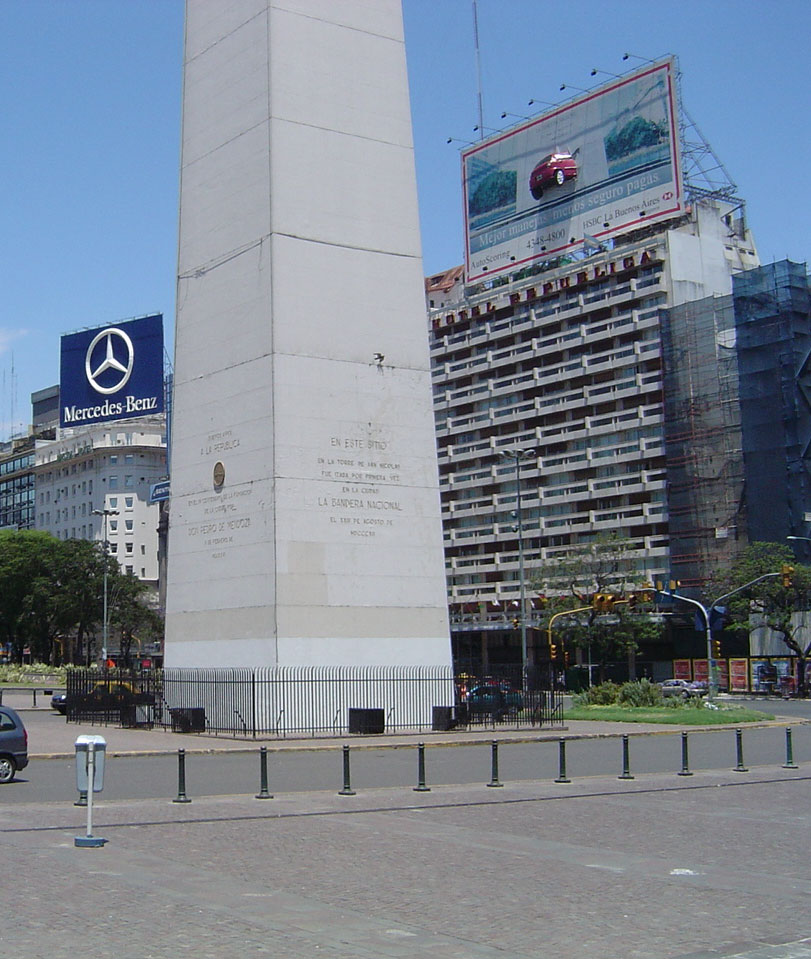
Look at the billboard at the top right
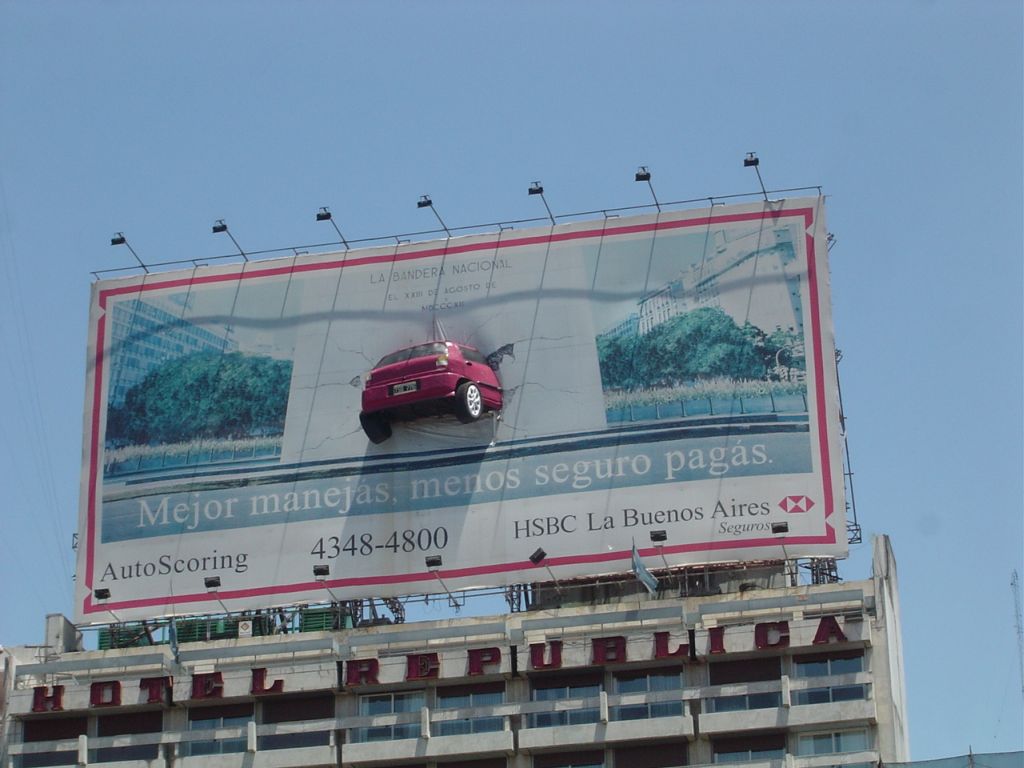
Mejor manejas, menos seguro pagas
You drive better when you pay less
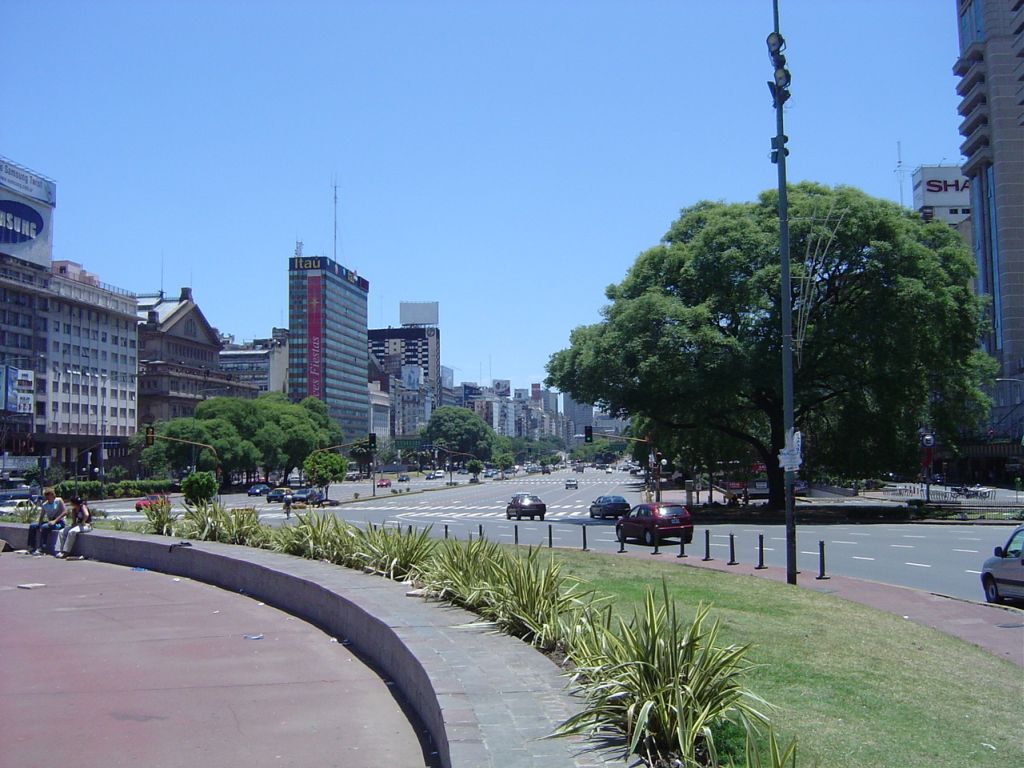
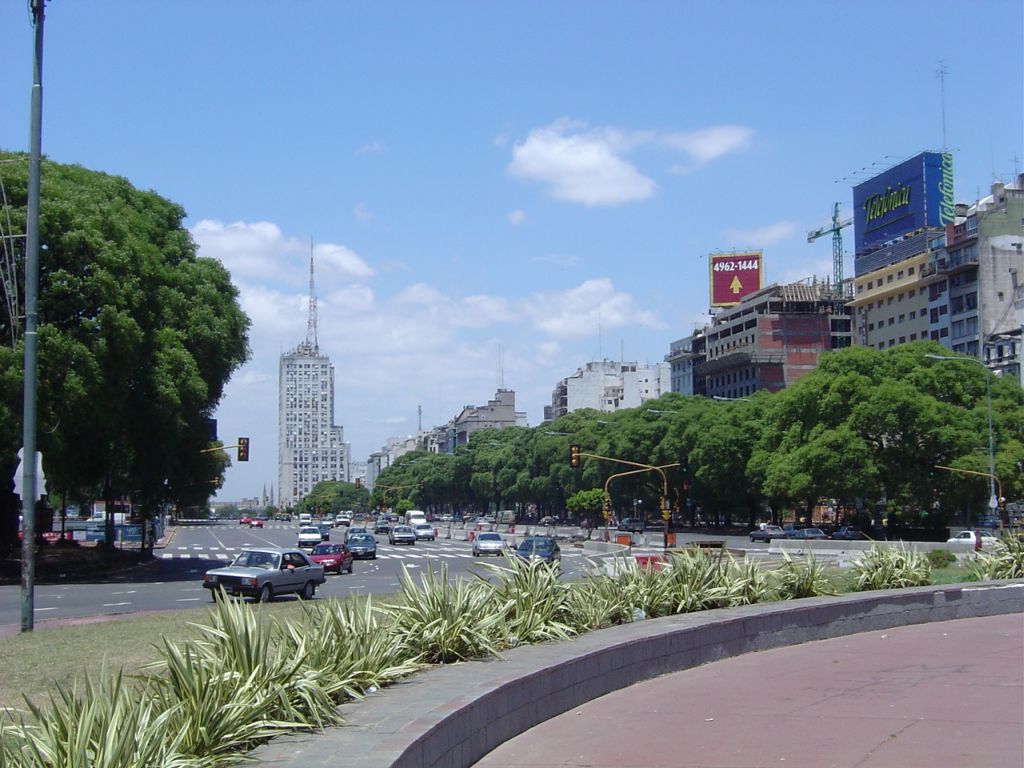
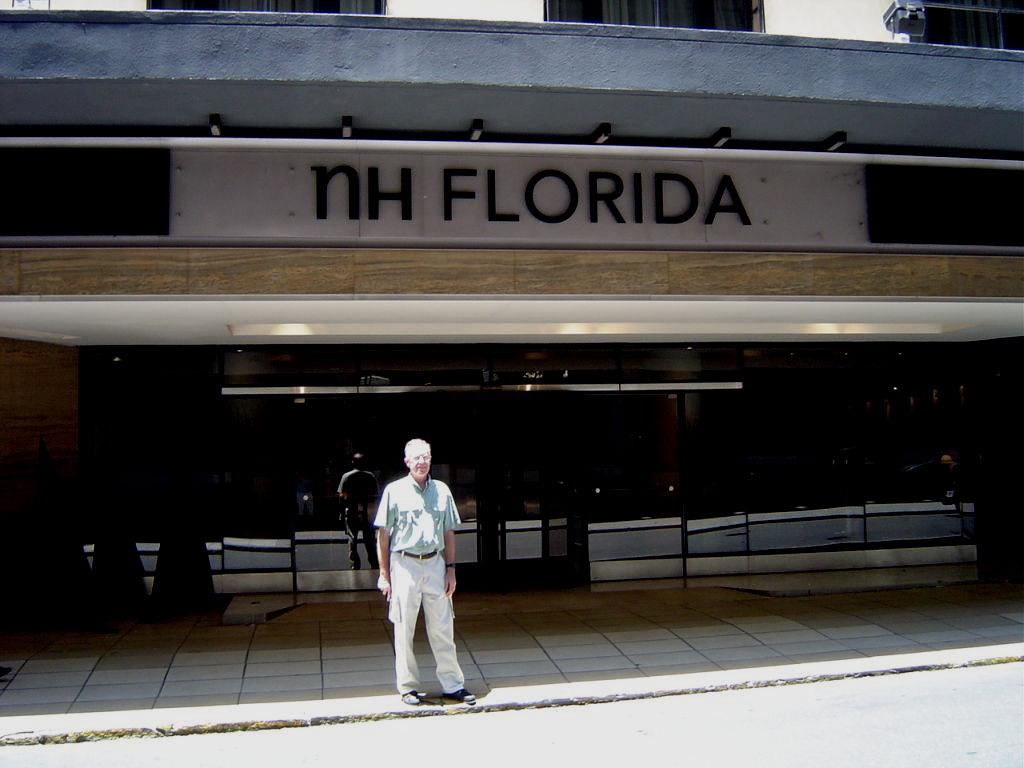
We paid for two weeks, cash-in-advance, to stay here
December 13th
Off to the Brasilian Embassy for a visa, which we hoped would involve no more than an immediate stamp in the passport. I printed the application forms the day before in the hotel and had photographs taken on the way, so we were, we thought, fully prepared. Naturally, the forms couldn't be accepted on paper. We had to re-enter all of the information, from parent's full names to last visit to Brasil twenty years ago, on their computer screens in the lobby so they could be printed again behind their glass barrier. Our passports would be returned the next day, after we presented a receipt from the bank down the street, showing payment of $110 (US Dollars!) each. Brasilians are required to pay that amount for a visa to enter the US, so US citizens get to pay the same amount, in retaliation. The only good news was that a yellow fever vaccination, required of those having visited Ecuador in the last 90 days, wasn't required, since we left Ecuador 93 days before.
December 14th
All our excess baggage was given to the customs agent for shipping to Germany. I drove the Jeep into the port facility and parked it in front of the Aduana (Customs) office and handed over the keys. It would be driven onto the boat instead of going into a container.
December 15th
Having spent most of the third and fourth weeks in Buenos Aires dealing with auto and luggage transport, this was our first, and only, real day of vacation in Buenos Aires
December 16th
The van driver who moved all six suitcases and other assorted packages from Palermo to our hotel in the center of Buenos Aires was quite happy to be called back to take only four pieces of luggage to the local airport for the flight to Iguaçu Falls. Even though we loaded as much as we could onto the palette going by ocean-freight, the suitcases were still 30 kg each, far above the 15 kilos allowed for domestic flights. Elsa talked them out of half the over-weight fees. Fortunately, they didn't weigh the carry-on bags, into which we stuffed as much heavy stuff as we could.
The plane from Buenos Aires landed in Argentina, adjacent to the Falls de Iguaza. The falls, which straddle the Argentine/Brasilian border, make it necessary to cross the border into Brasil, to see both sides, a very informal procedure, negotiated by our cab-driver while we waited in the car.
Words can't describe the enormity of the Foz da Iguaçu. From left to right, they span the horizon, dropping 70 meters in a continuous roar. Walkways extend out over the river below the falls, where you will be soaked completely in the spray and mist
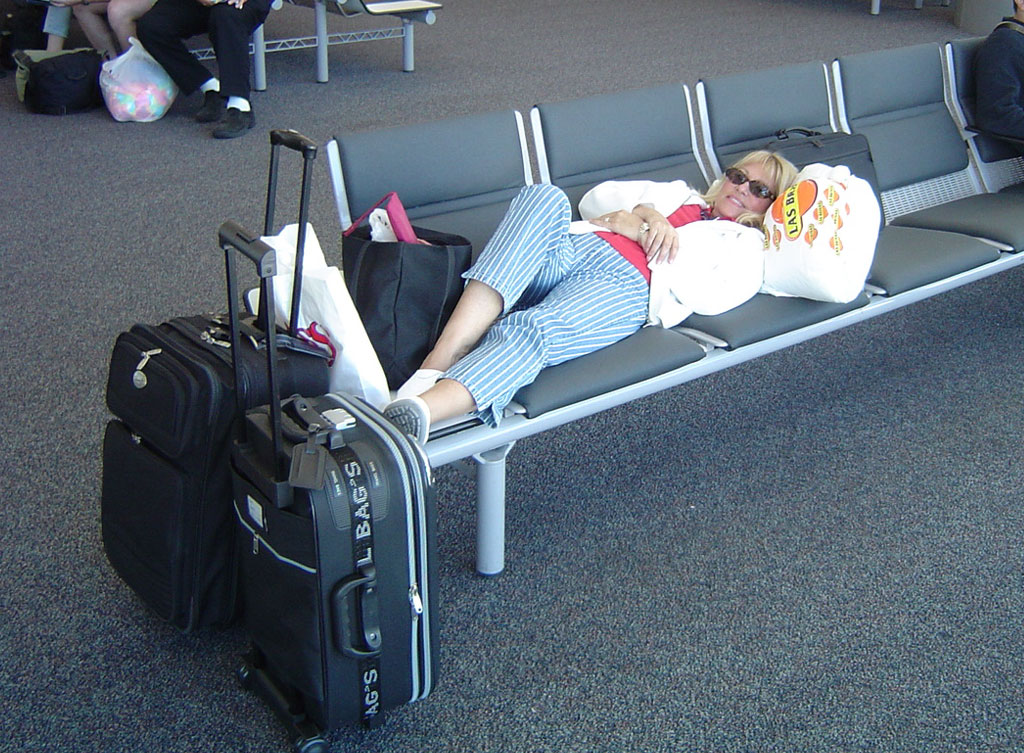
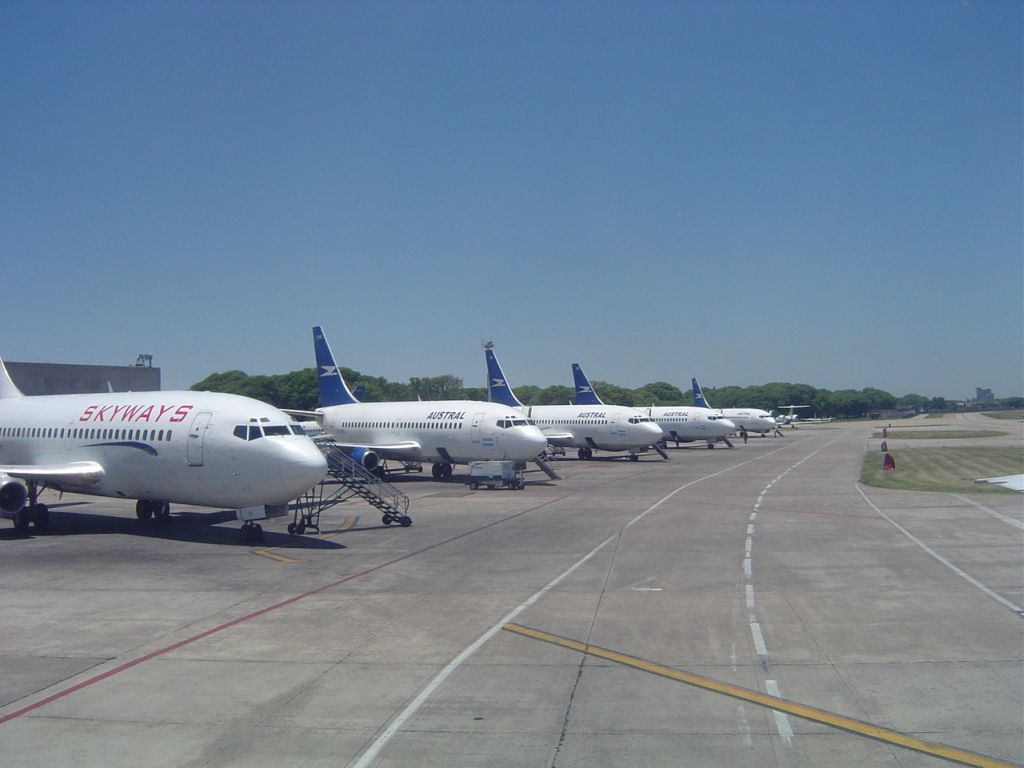
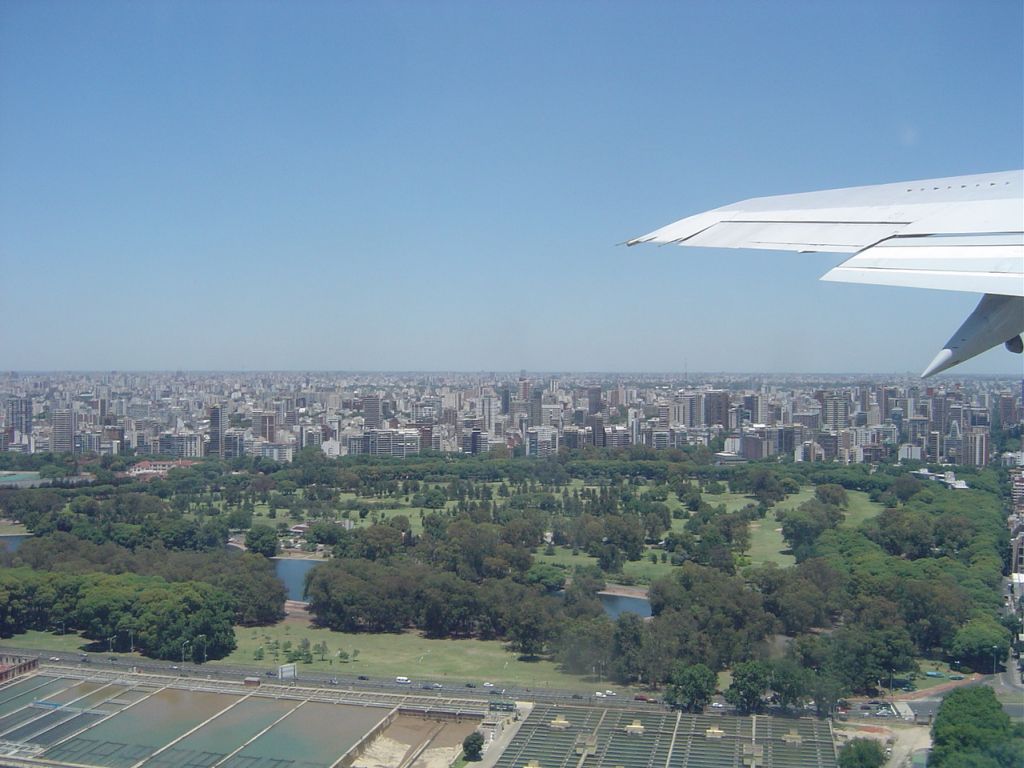
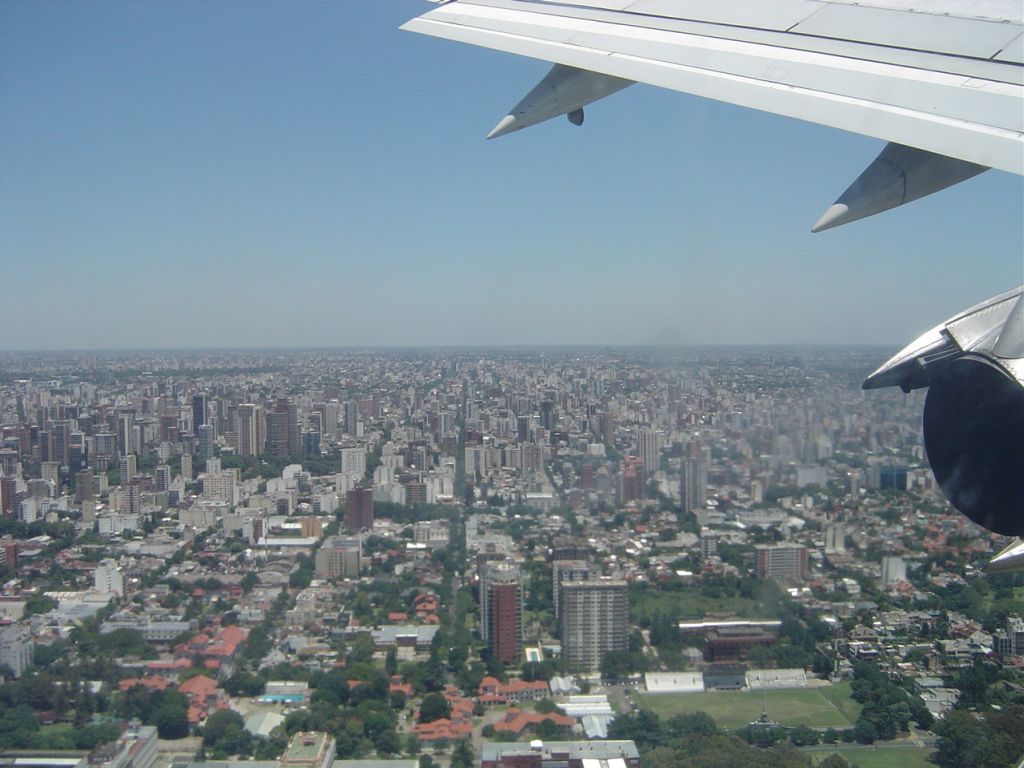
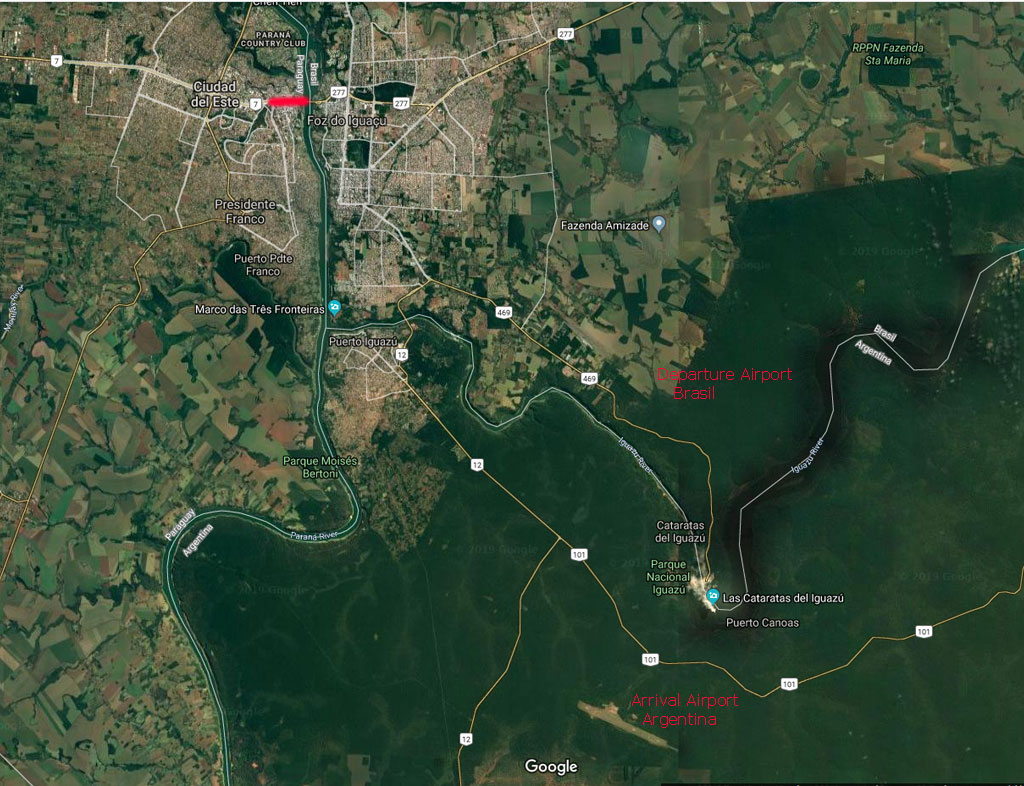
We arrived at the airport in Argentina (bottom of map) and visited the Argentinian Iguazu Falls.
After entering Brasil, we made a short venture (red line) into Ciudad del Este, Paraguay
We departed from the Brasilian airport (center of map) after visiting the Brasilian side of the Falls
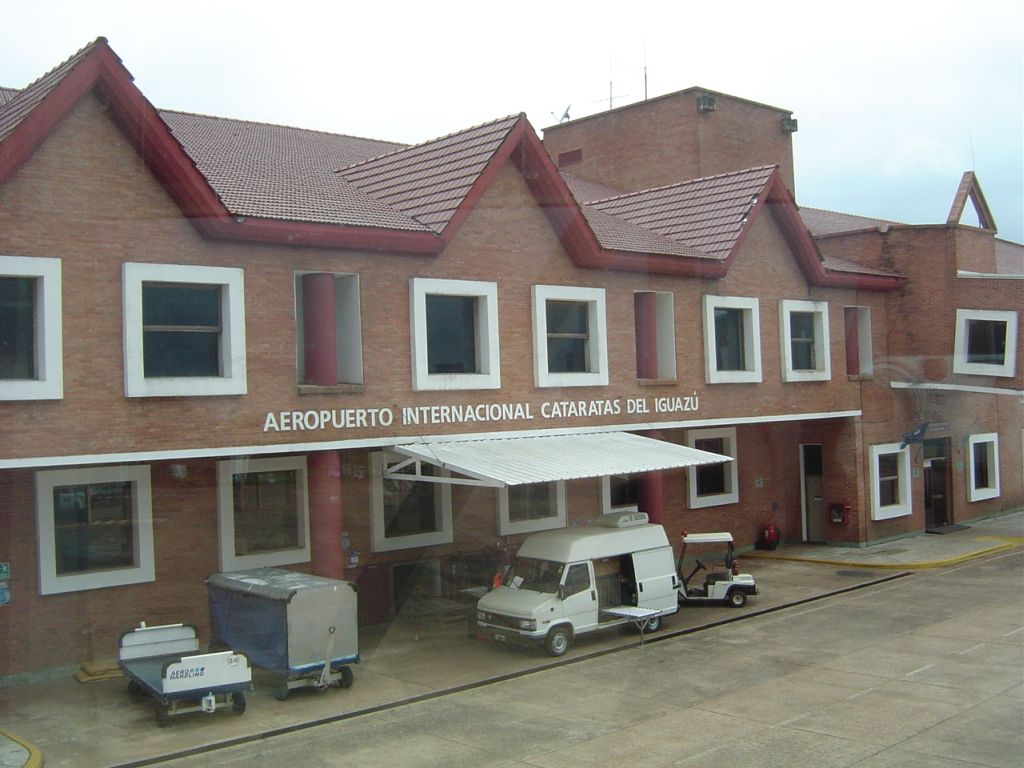
The airport on the Argentine side of the Falls del Iguazu
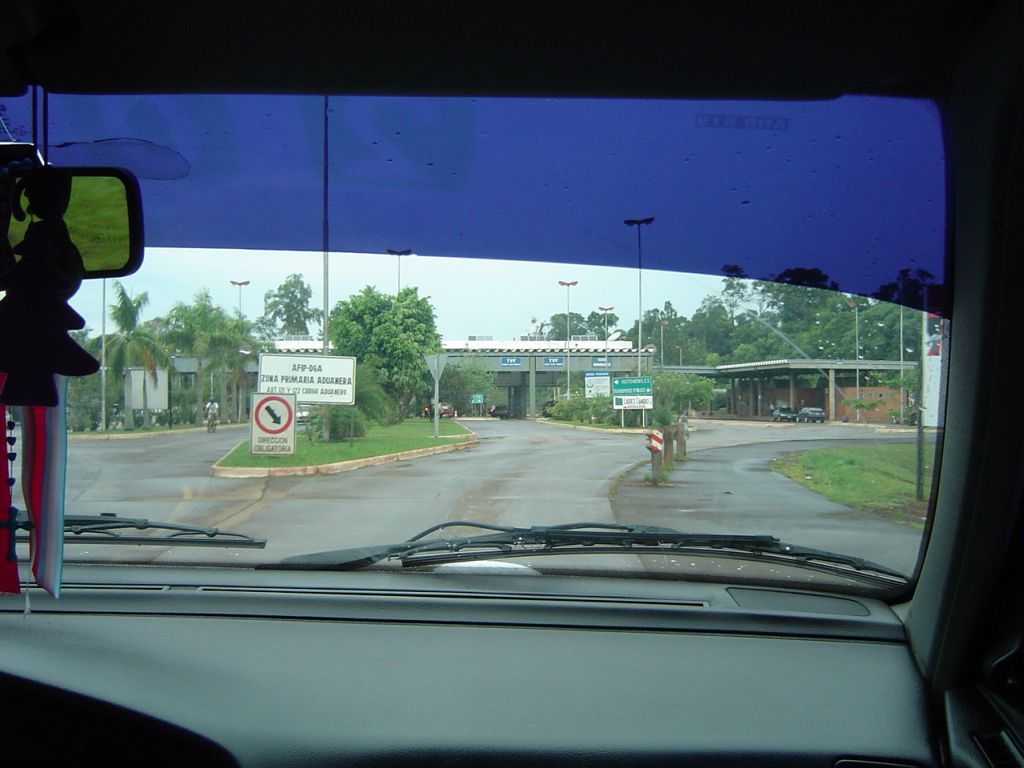
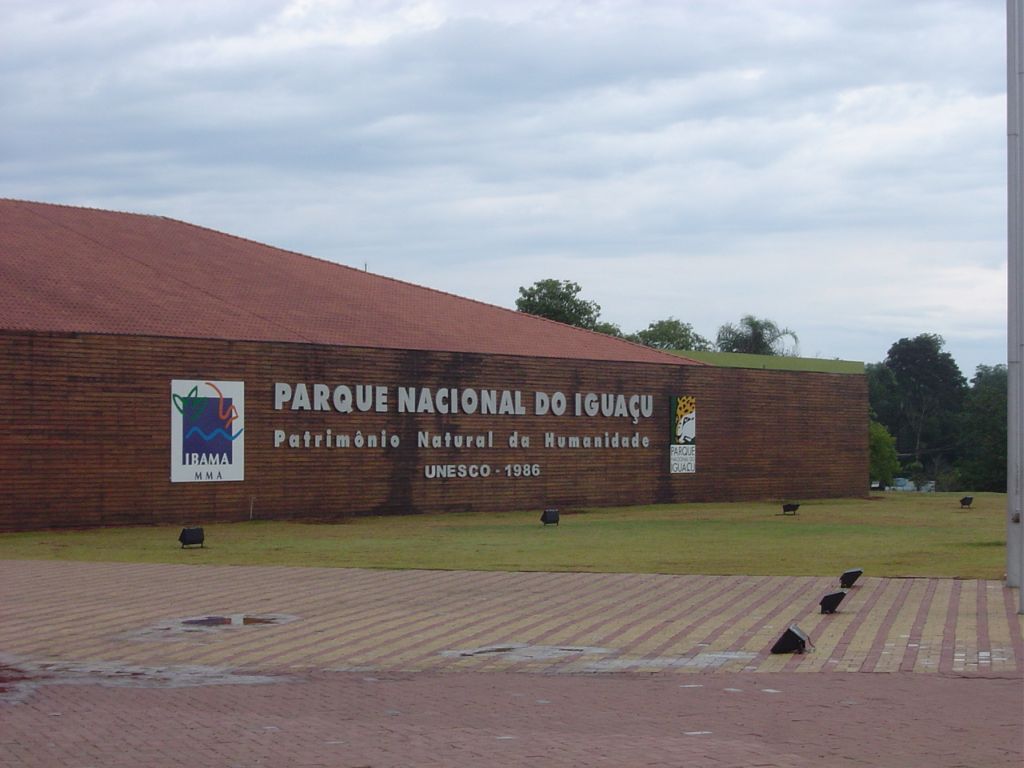
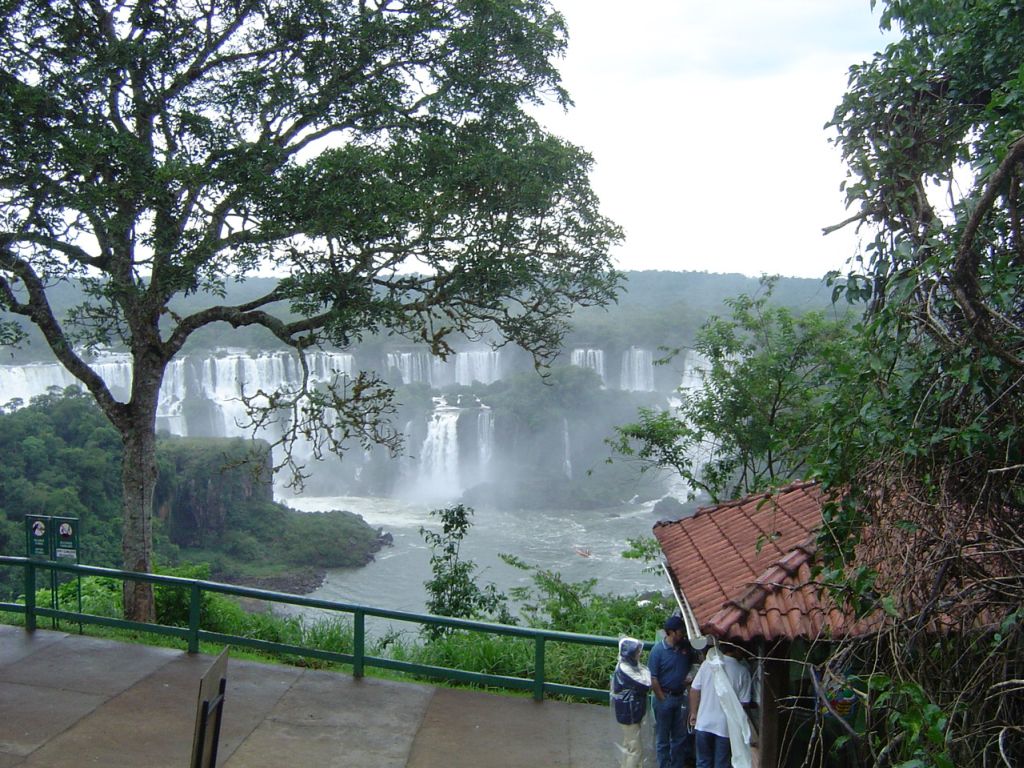
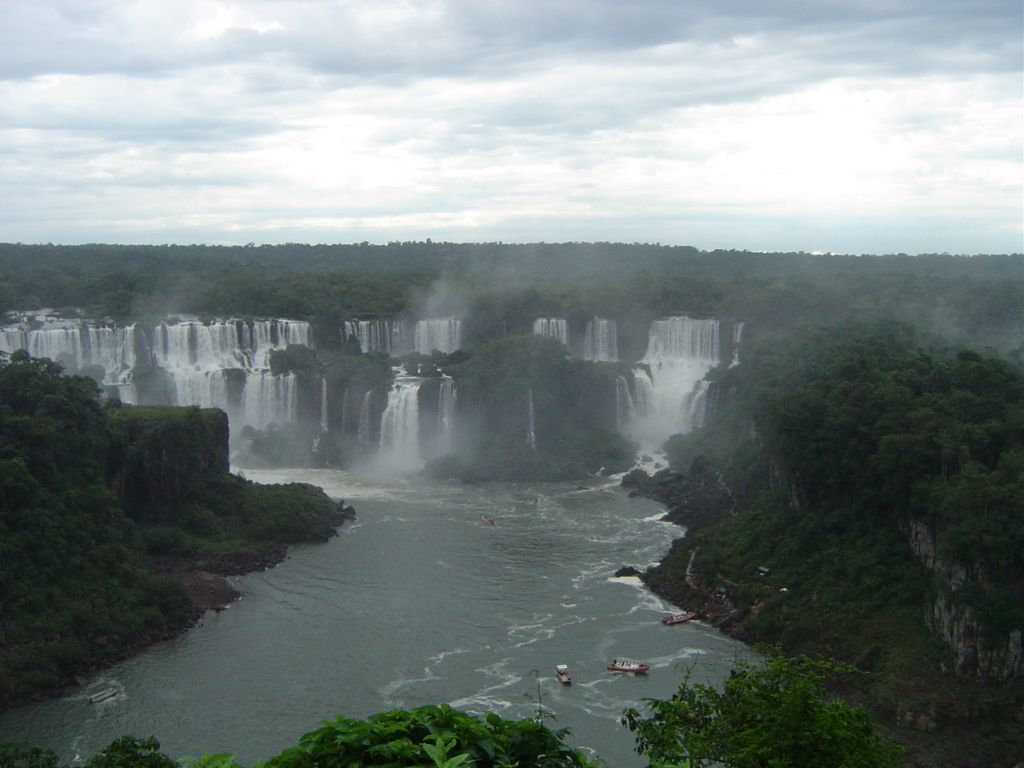
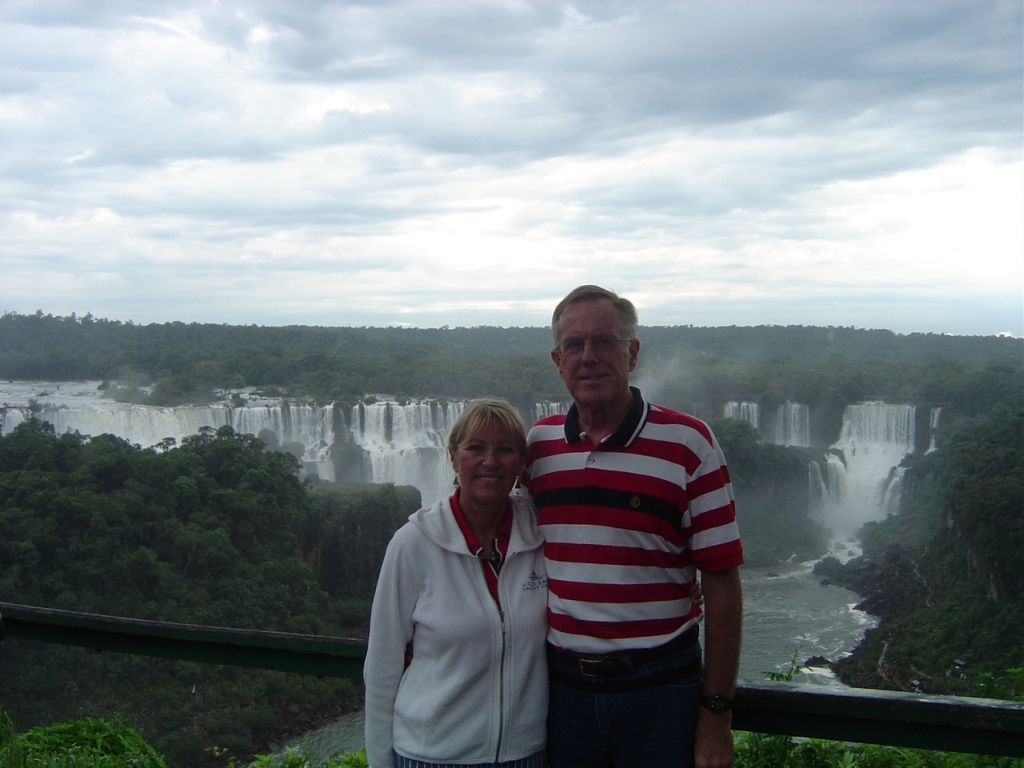

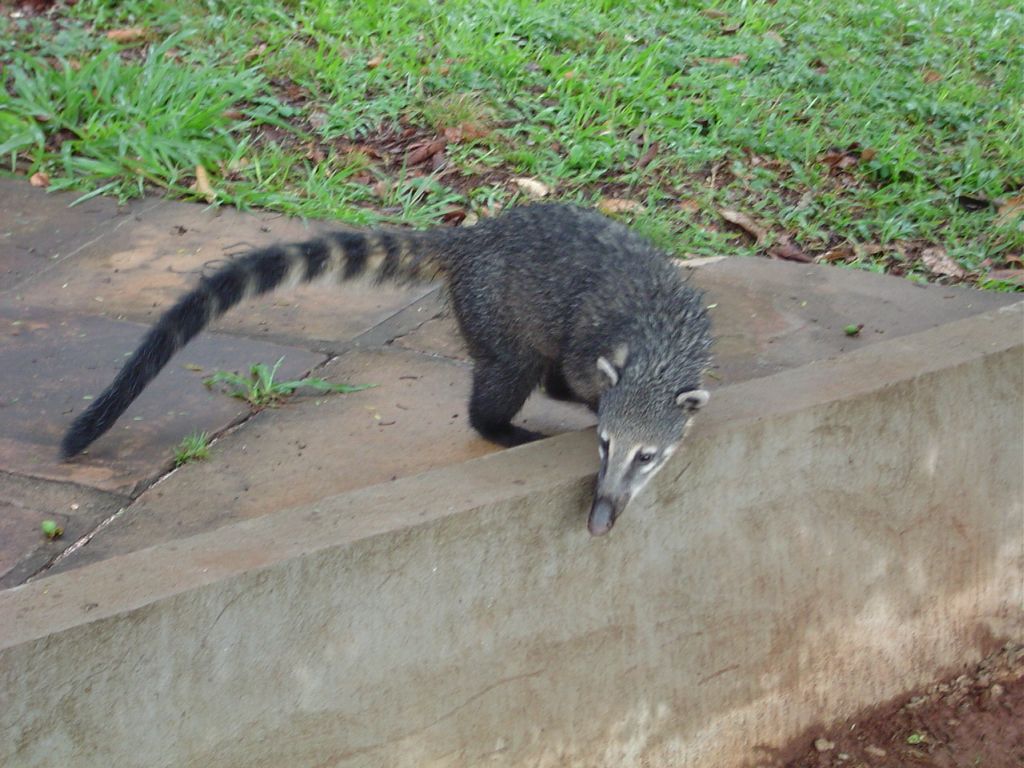
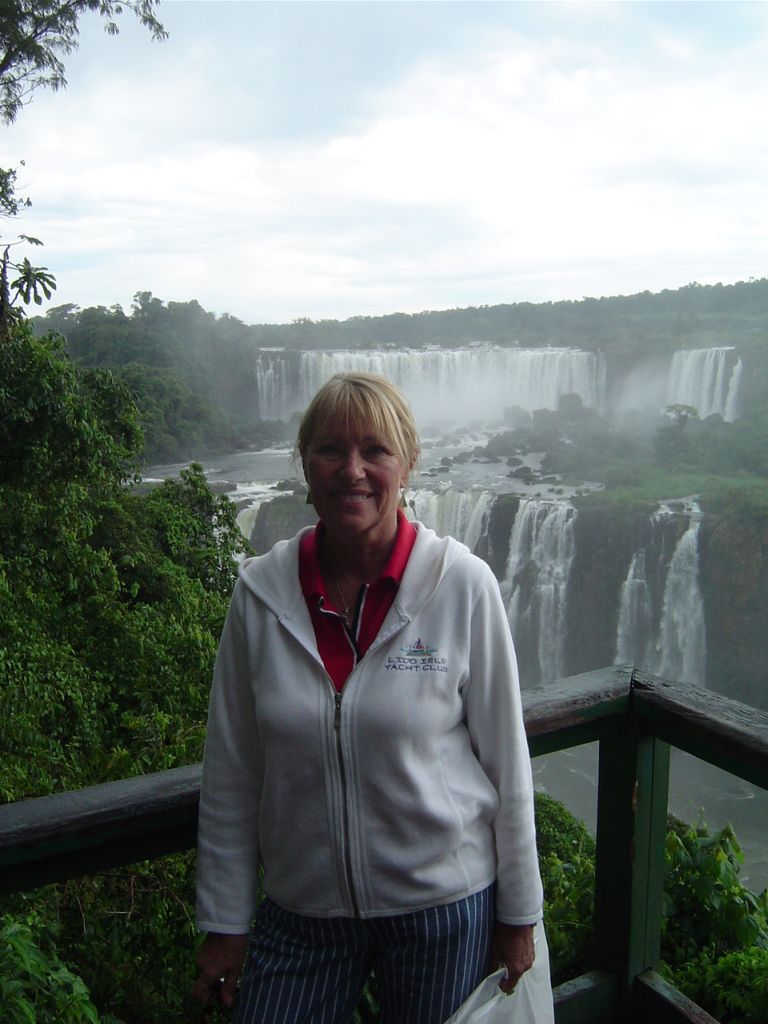
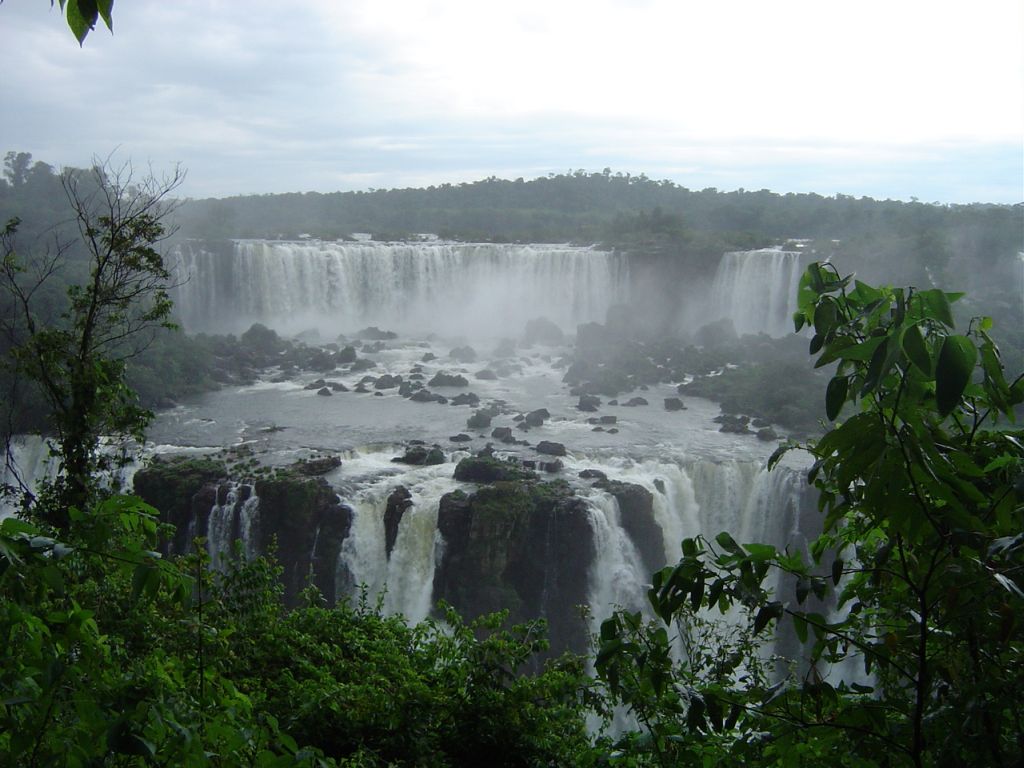
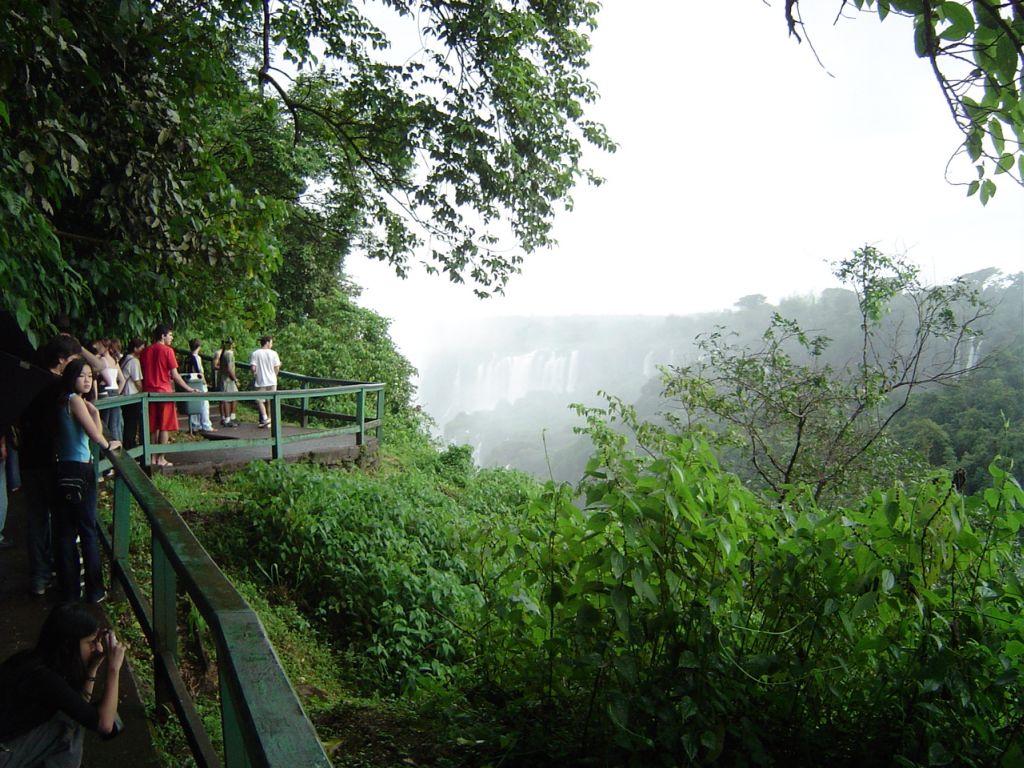
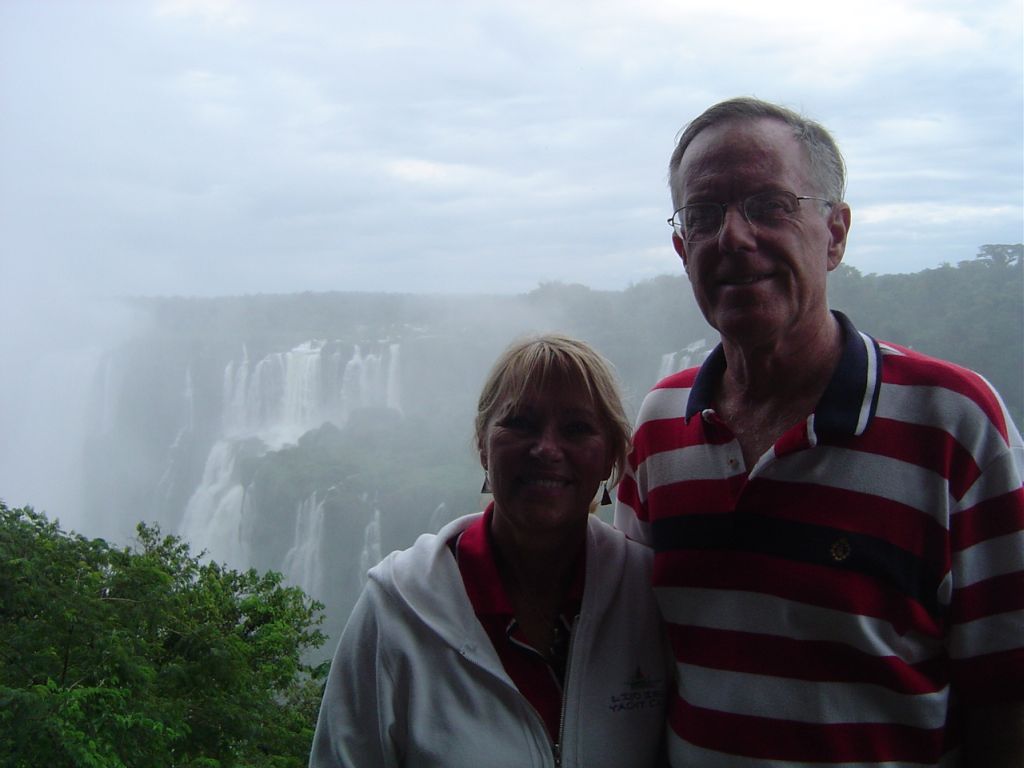
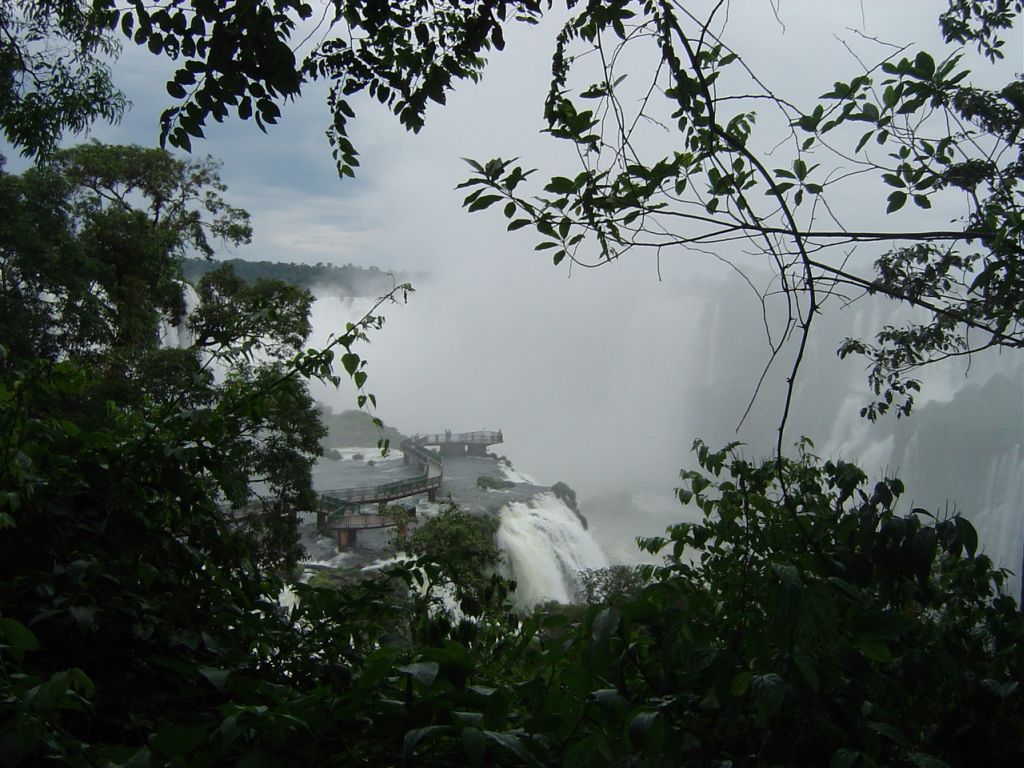
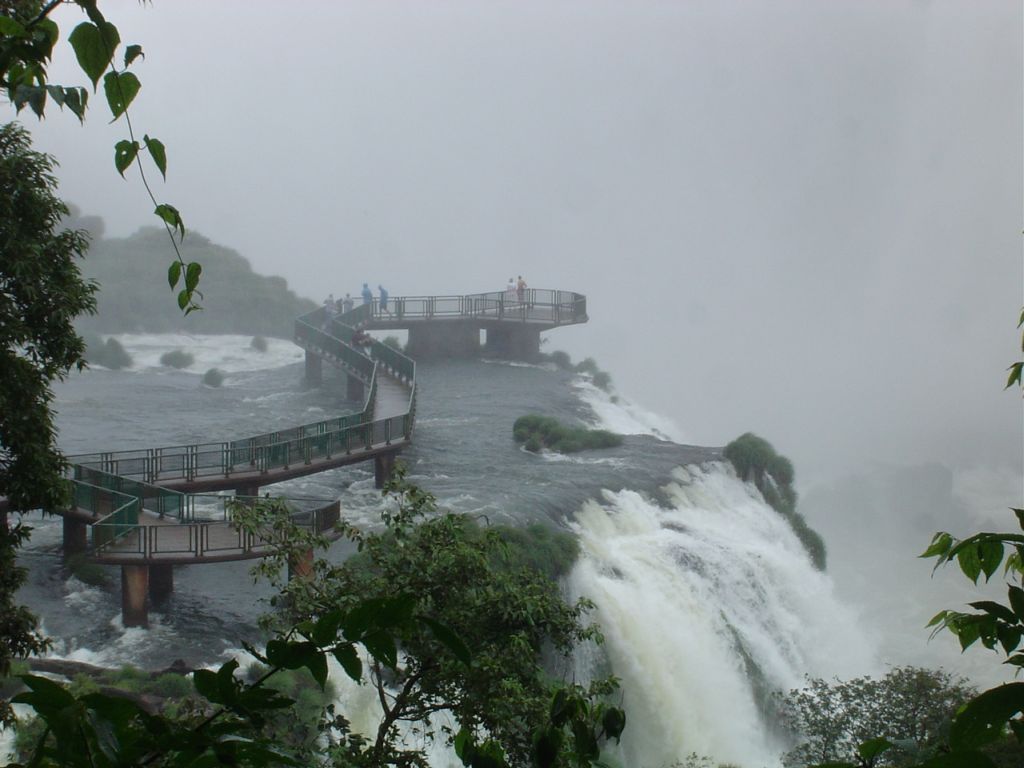
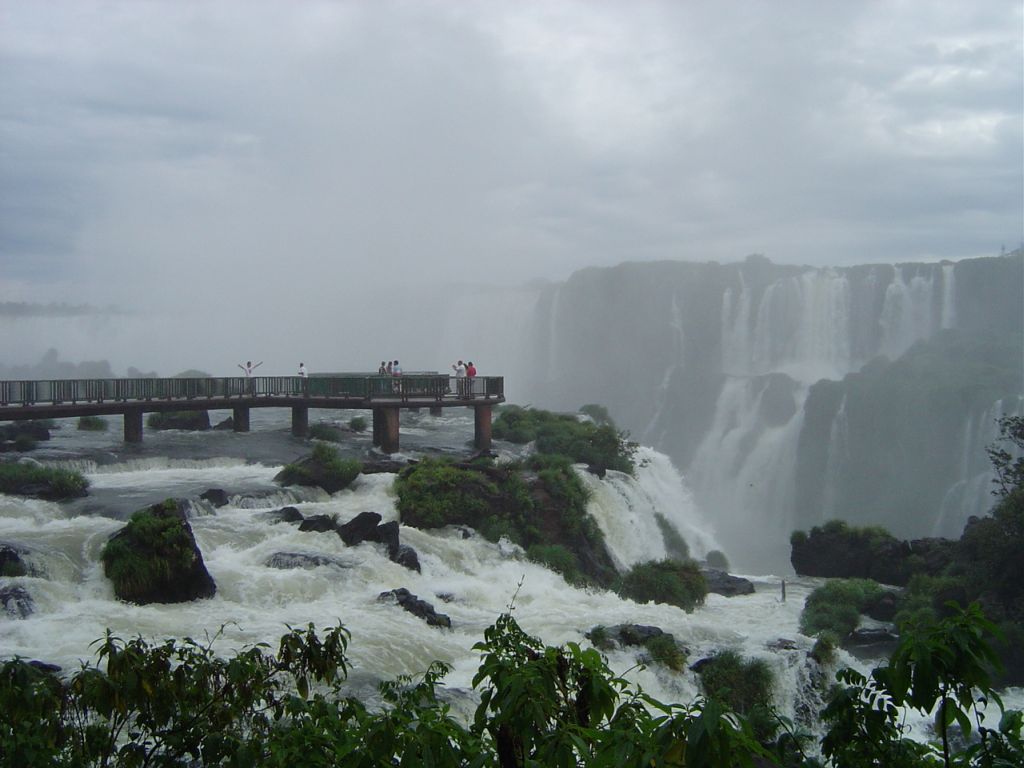
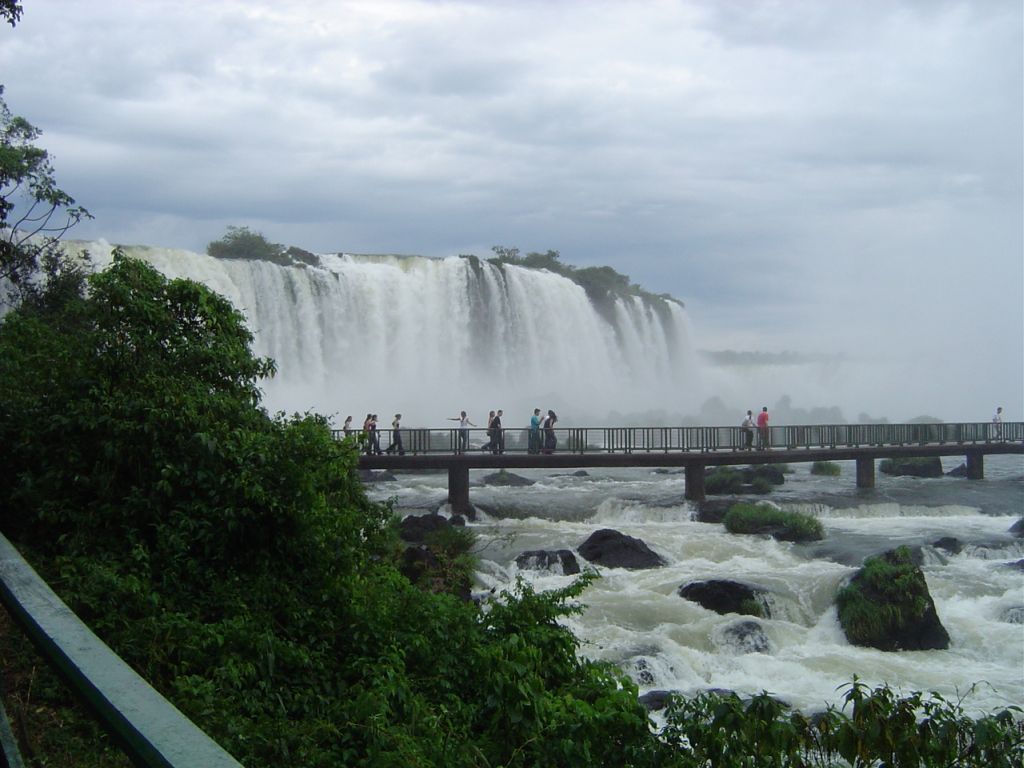
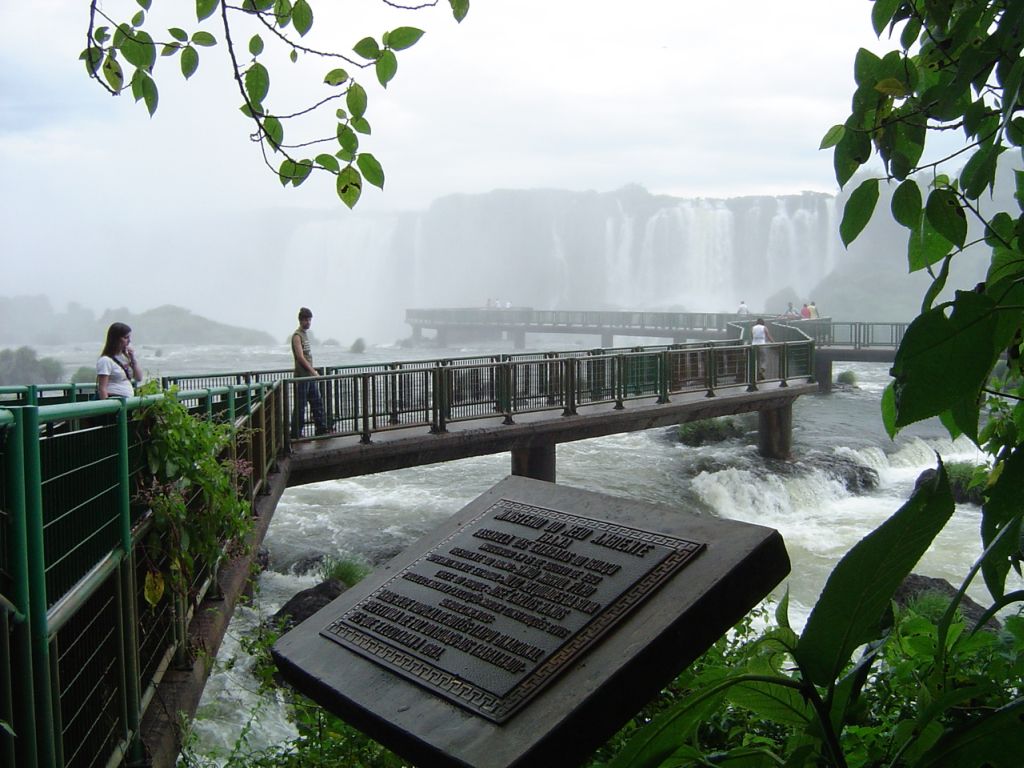
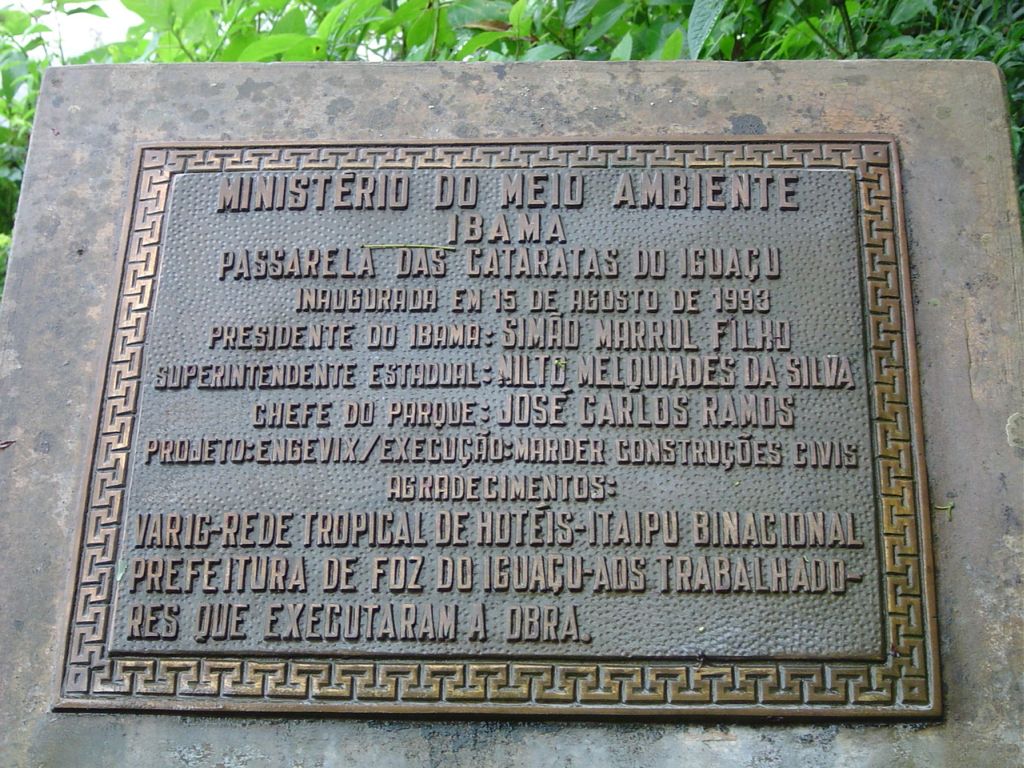
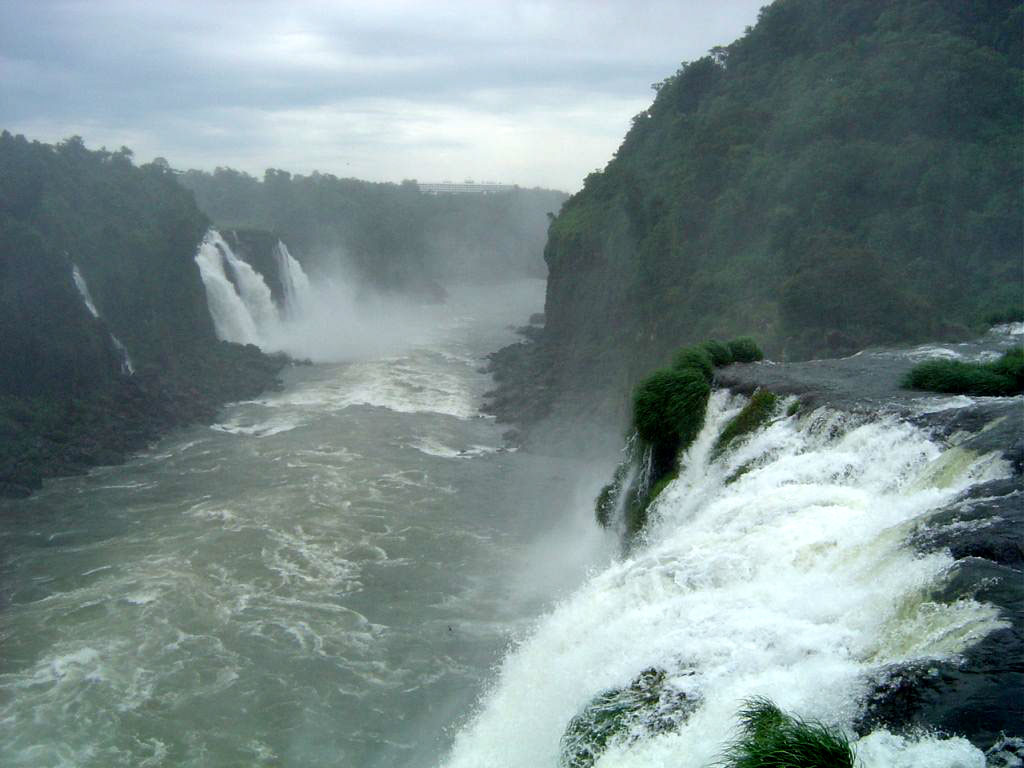
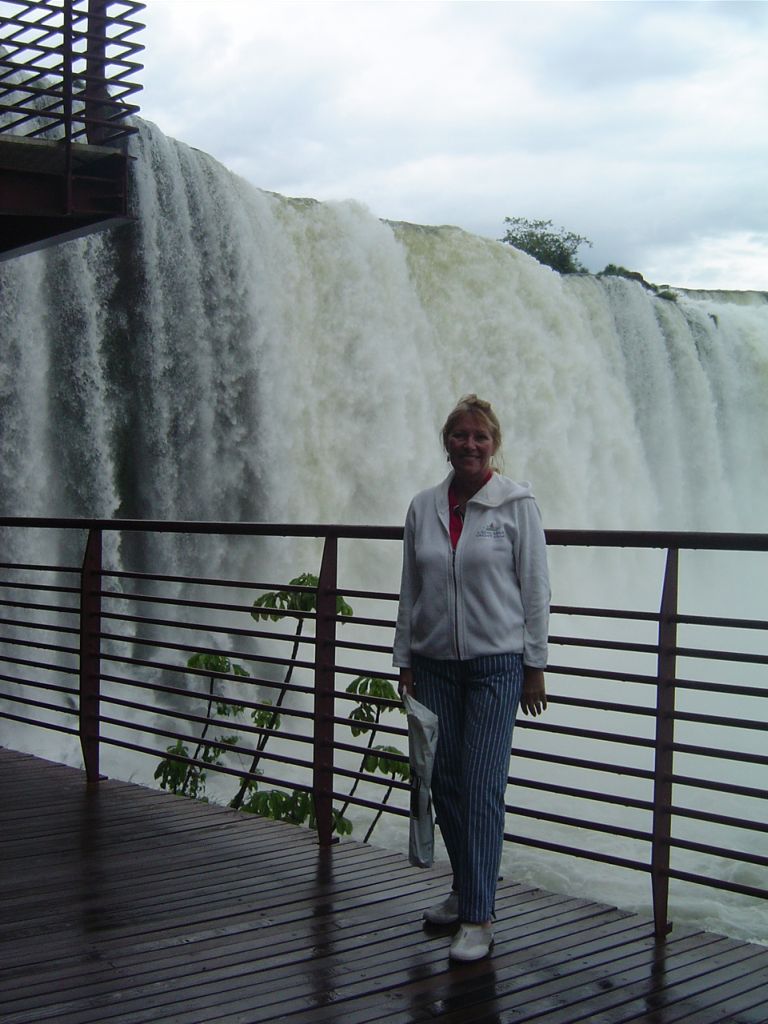
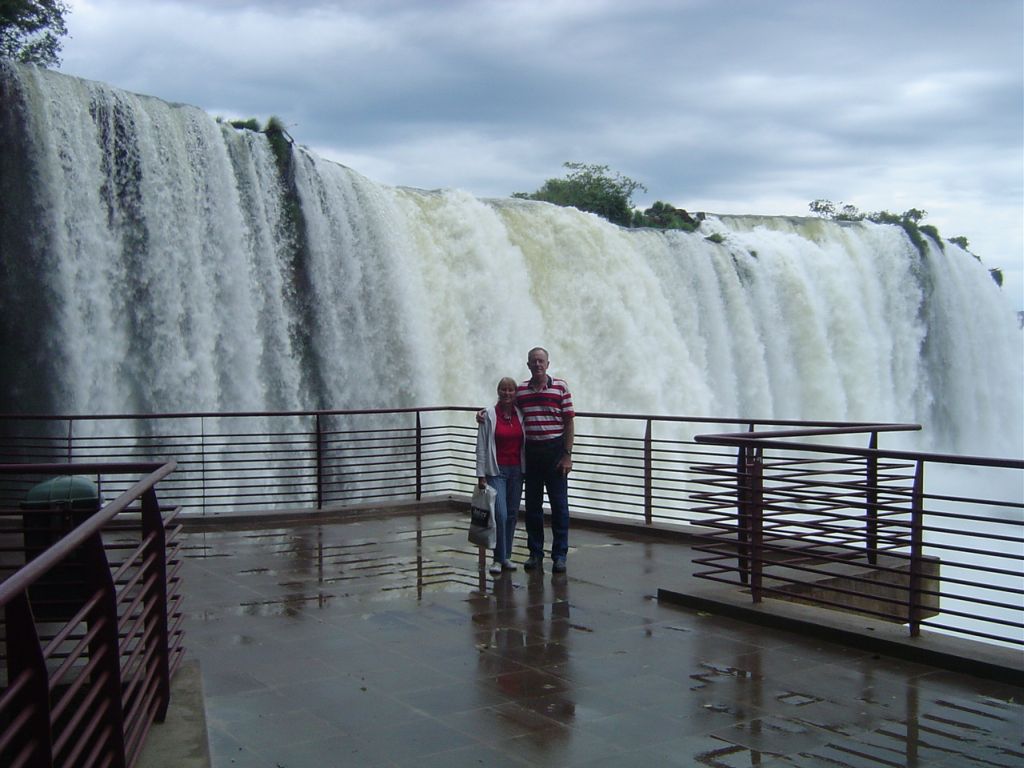
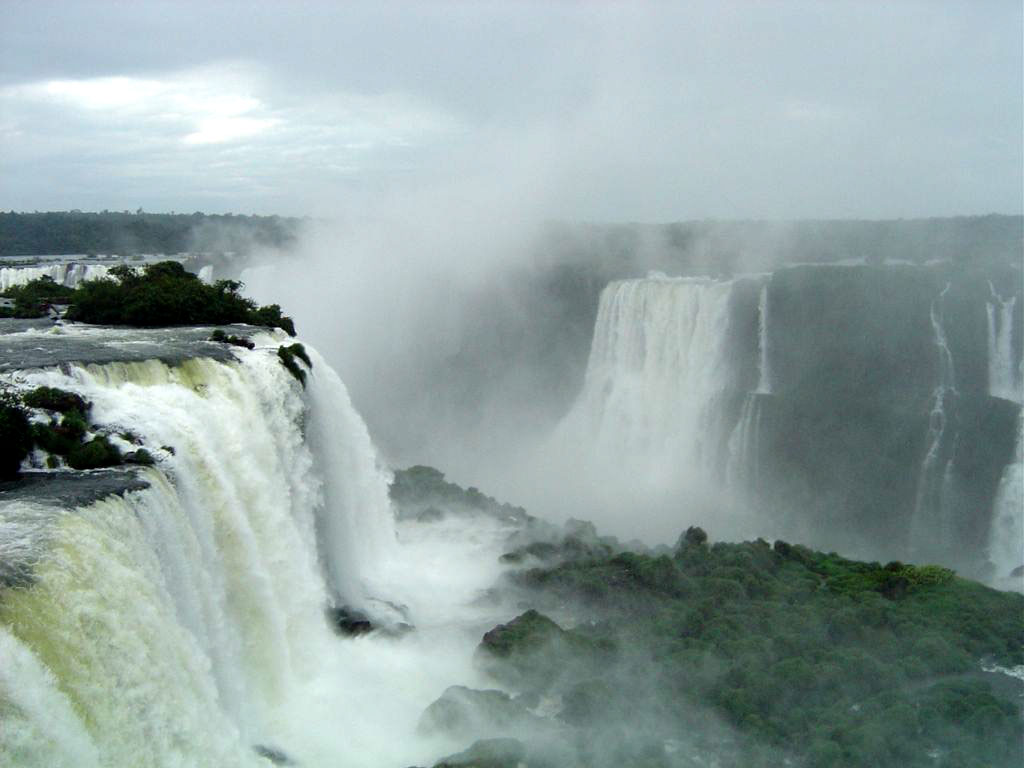
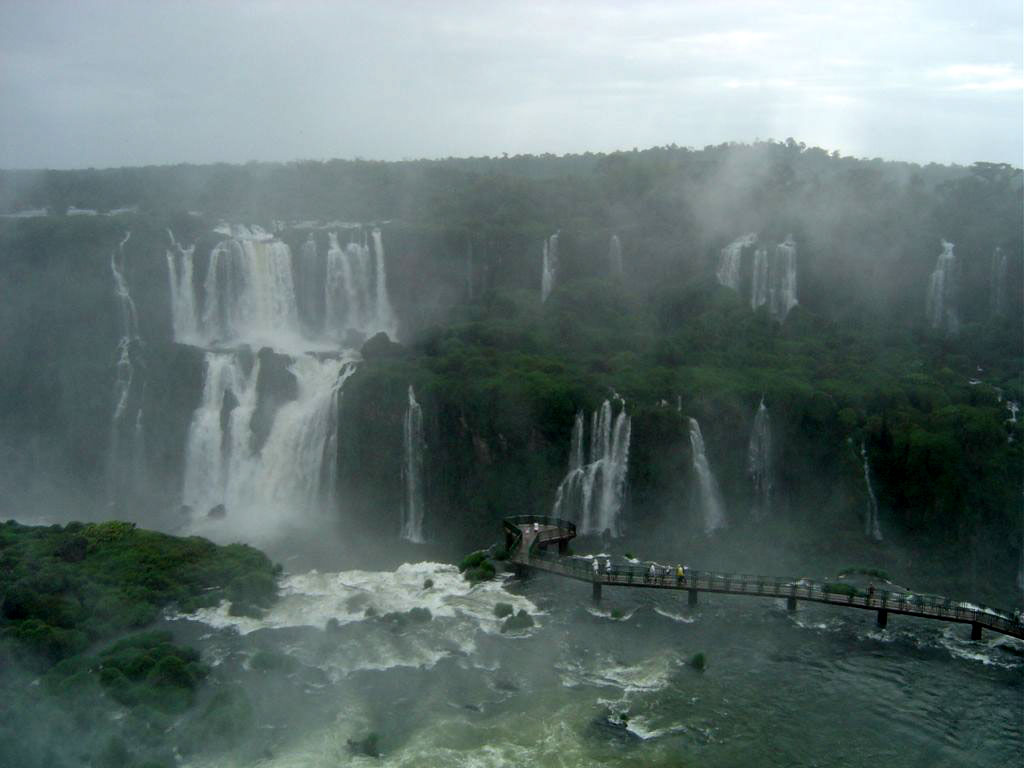
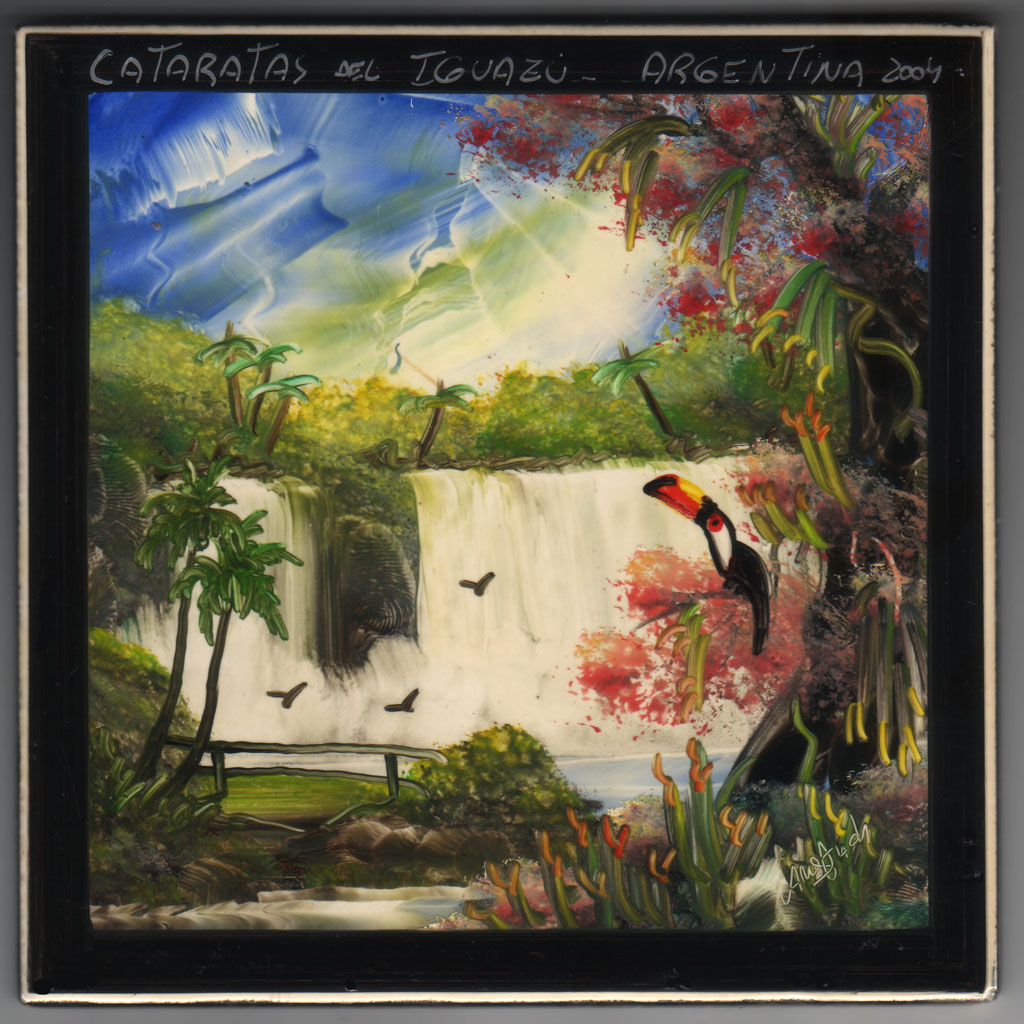
On the way out of the park, an enterprising artist offered to finger-paint a white ceramic tile with a scene of the falls.
The cost would be $15.00, if he did it in one minute or less.
I agreed and the race was on.
He produced this colorful tile for us from scratch in 59 seconds !
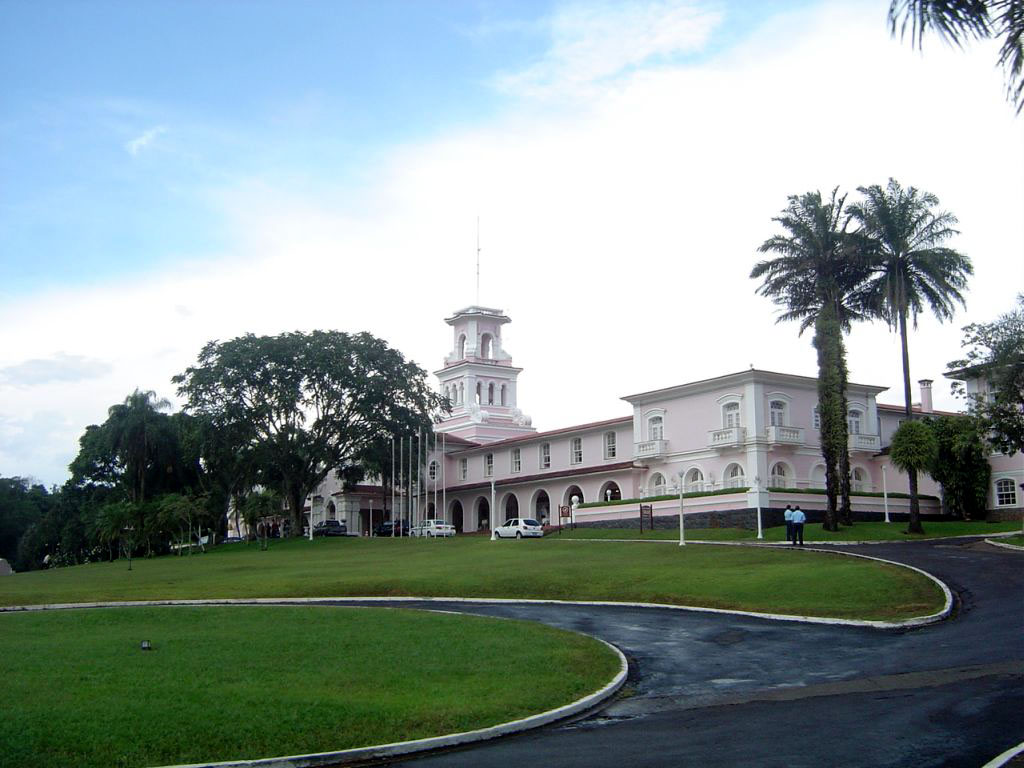
December 17th
Paraguay, just across the river from Brazilian Foz da Iguaçu, beckoned as the 16th country of our adventure. Elsa, already weary of border crossings, agreed to go, only because the car and all its paperwork wouldn't be involved. Our hired gun for the day, Nestor, agreed to take us in and out in the morning, before delivering us to the Argentine side of the falls for the afternoon. Traffic, composed of cars, busses, trucks, and motorcycles, got ever more hectic as we approached the bridge leading into Parguay. Nestor parked the taxi on the Brazilian side and walked across with us. We stopped at the Immigration office, expecting to get a quick stamp in the passport and be on our way. When the agent at the window called an assistant to fill out visa forms, we knew our quick trip in and out was doomed. Nestor came to our rescue, promising the agent he would get us in and out in an hour without creating any international incidents. They went for it and handed our unstamped passports back.
Ciudad del Este, the border town, gives LaPaz, Bolivia, a run for having the most poor people per square inch. Stalls spilled out into the street, with vendors selling sunglasses, watches, and Pirelli tires. Everybody was selling, nobody was buying. Paraguay was once a powerful country, but lack of a sea-port and fierce competition from Argentina and Brasil have relegated it to its current position of supplier of fake goods such as Bolex watches and Mike tennis shoes. I wanted a T-shirt from Paraguay, but the stalls offered only shirts with the names and numbers of famous soccer players. Nestor finally found a shop several blocks down a side-street, where I got my shirt and Elsa got some cute doilies.
I have collected photos of Jeep Cherokee license plates from every country to serve as "country separators" in our eventual digital photo album. Thinking that having a Jeep Cherokee in Paraguay was unlikely in the first place and that finding it was even more unlikely, what to my wondering eye should appear but a nice new shiny one, sporting a Paraguayan license plate. I ran out into the street, following it until it was stopped long enough by traffic for a quick photo, creating, I'm sure, the very sort of scene the Immigration officer wished us to avoid.
On the way across the bridge back into Brasil, we were passed by boys carrying large plastic shopping bags. We caught up with them at a hole in the fence along the bridge, just past the river-bank on the Brasilian side. There they opened the shopping bags, took out smaller, carefully-wrapped bundles and threw them through the hole in the fence. The parcels hit the river-bank, at least one hundred feet below, with a resounding thud. There they were quickly gathered and loaded on human mules, who spirited them off into the jungle. "Cigarette smugglers," Nestor explained. Several Pirelli tires followed the cigarettes through the hole in the fence. Thrown flat so they wouldn't bounce into the river, they made an even louder smack before they, too, disappeared into the jungle.
Our visit to the Argentine side of the falls was done on a much nicer day than we had for the Brasilian side. We opted for the "gonzo" entrance package, allowing us a train ride to the "Devil's Mouth, a raft ride back, a speed-boat trip into the mist of the falls and a Jeep ride through the jungle back to the starting point. They threw in all the walking you could stand at no extra cost. Nestor dropped us off at about noon and promised to pick us up at 6:00PM.
It really does take hours to walk all of the paths provided. There are hundreds of view points from the top, middle and bottom of the many falls. Steel walkways take you right to the edge of the action; mist and rainbows abound. Photos of the falls are not an entirely satisfactory means of conveying the number of falls, their size and the amount of water that goes over the edge every second. Even movies would have a tough time.
Elsa especially liked the speedboat ride into the mist at the bottom, so I don't understand why she had such a death-grip on my arm. She would rather not have made as many passes into the spray as they did. They did push pretty far in; the boat could have easily filled with water in seconds if they miscalculated. Everybody was drenched at the end of the ride, but the hot weather made it bearable.
Nestor loaded two drowned rats into his taxi for the ride home.
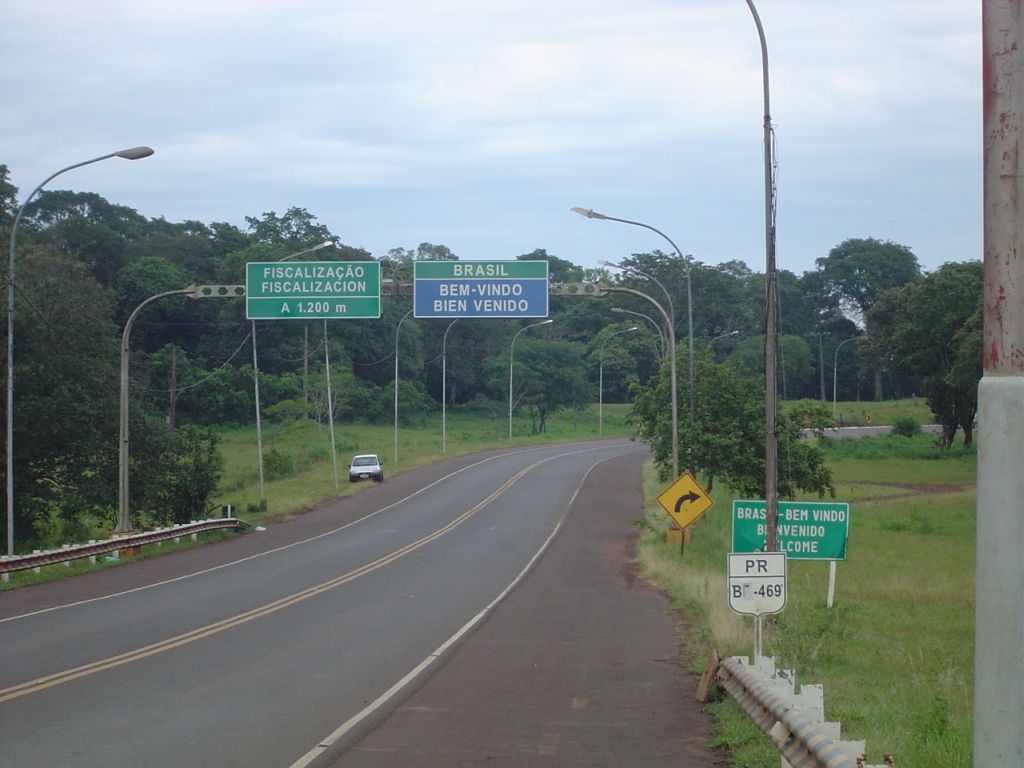
Leaving Argentina, entering Brasil

Pedestrian bridge, entry to Paraguay
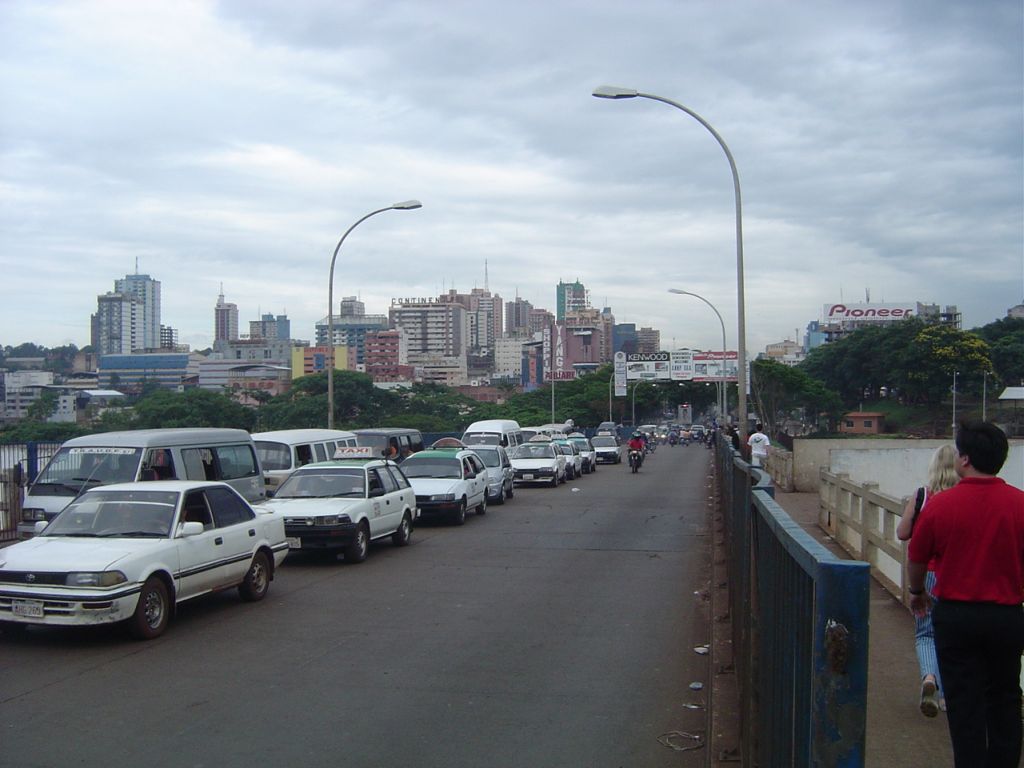
Ciudad del Este, Paraguay

You can have your passport stamped, if you desire. Otherwise, just walk in.
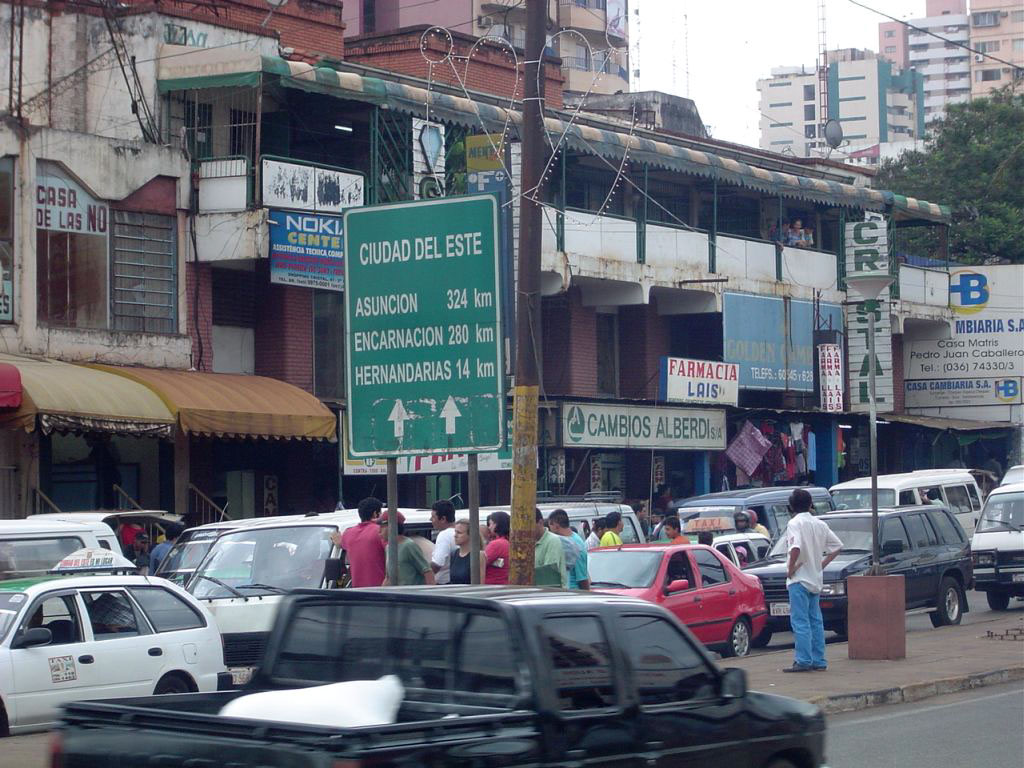
Barrio San Blas
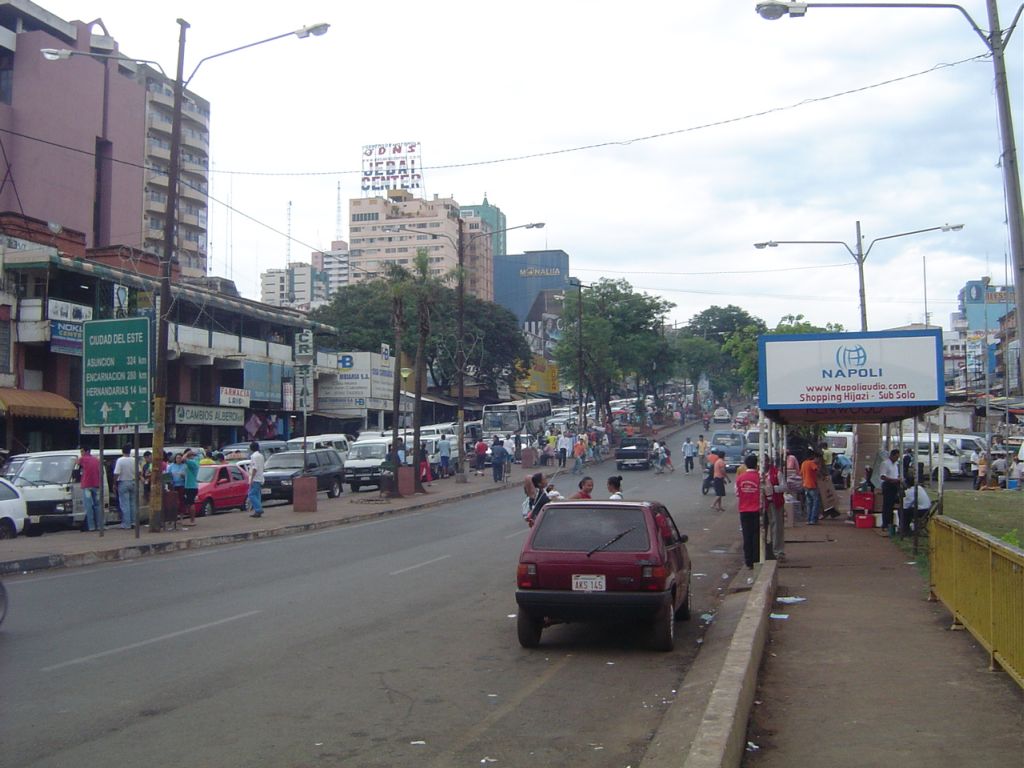
It's more like Mexico than Mexico.
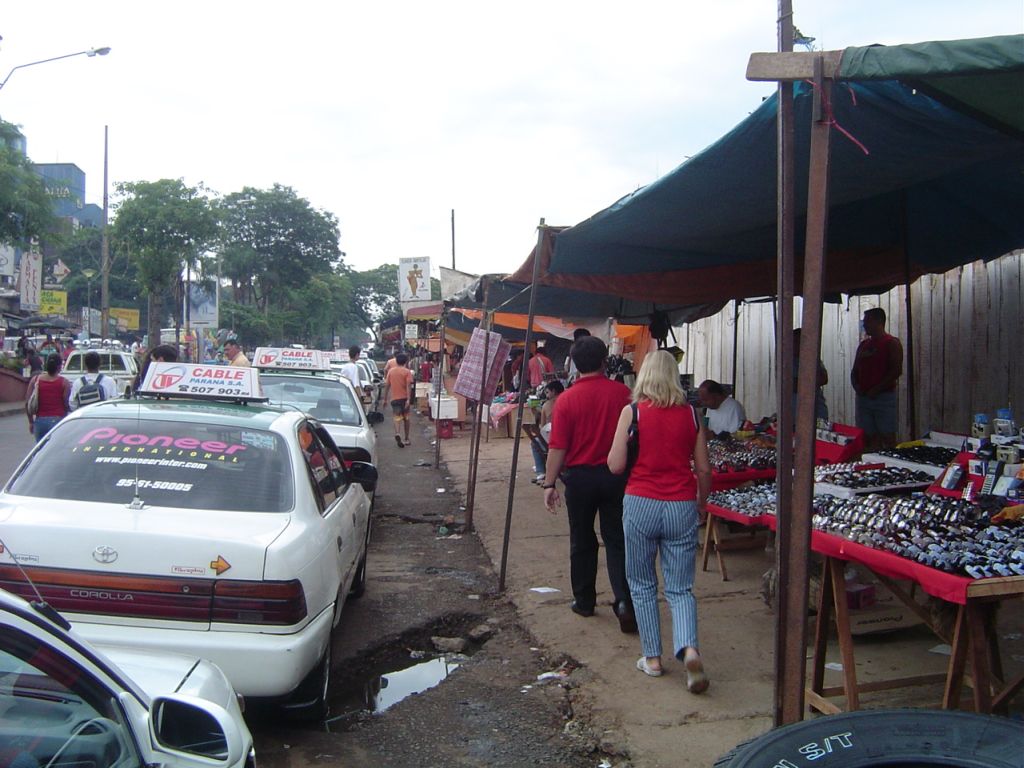
Elsa bought a fine "Tonny Hilfiger" watch for $5.00 US. It still works, 15 years later.
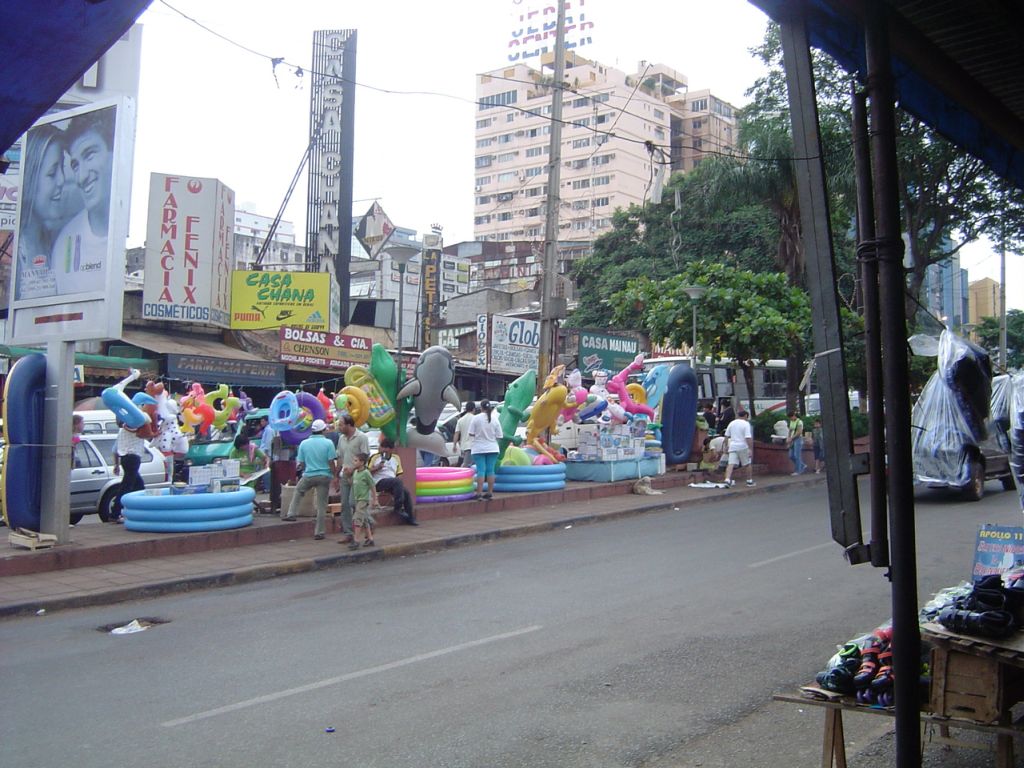
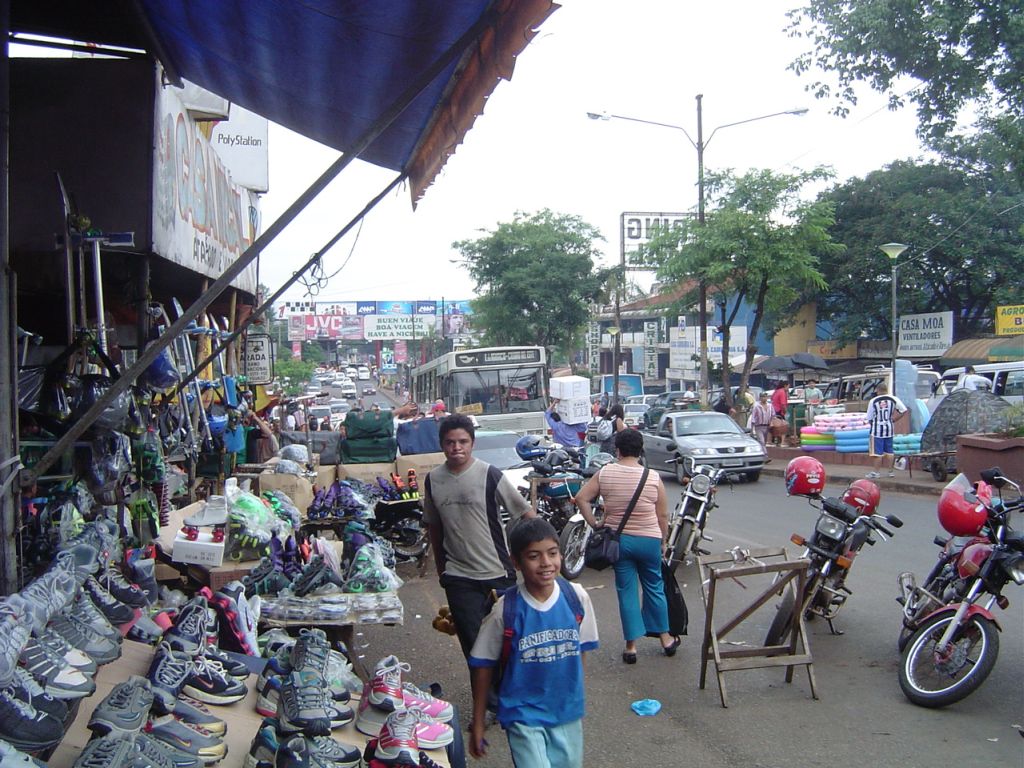
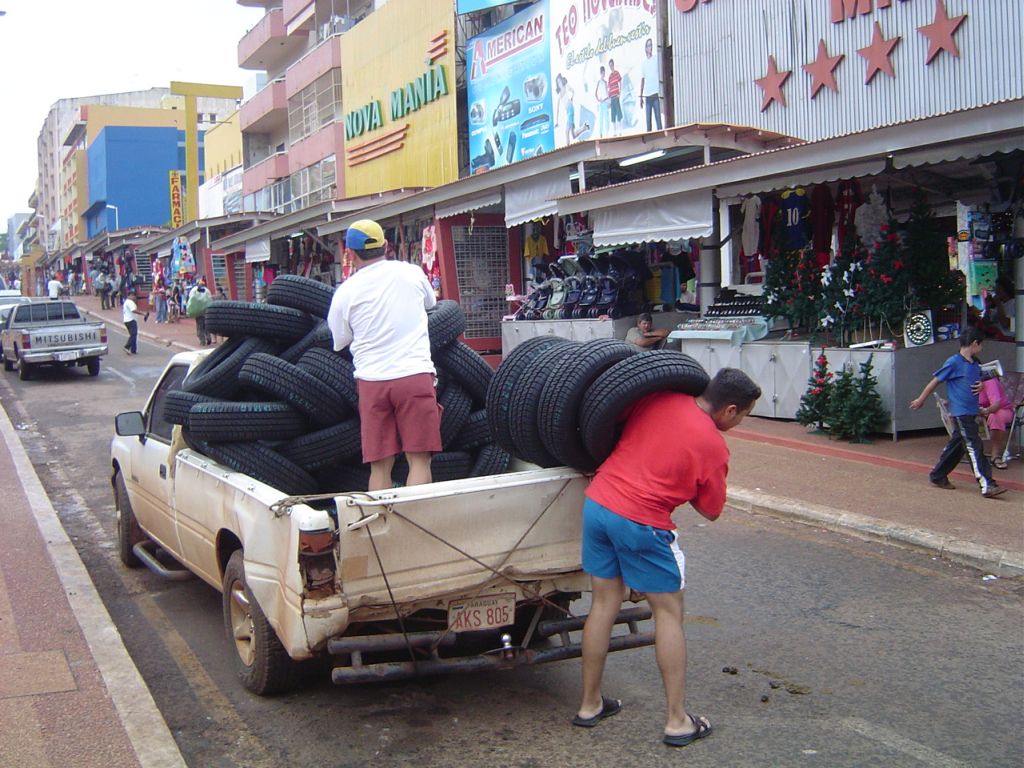
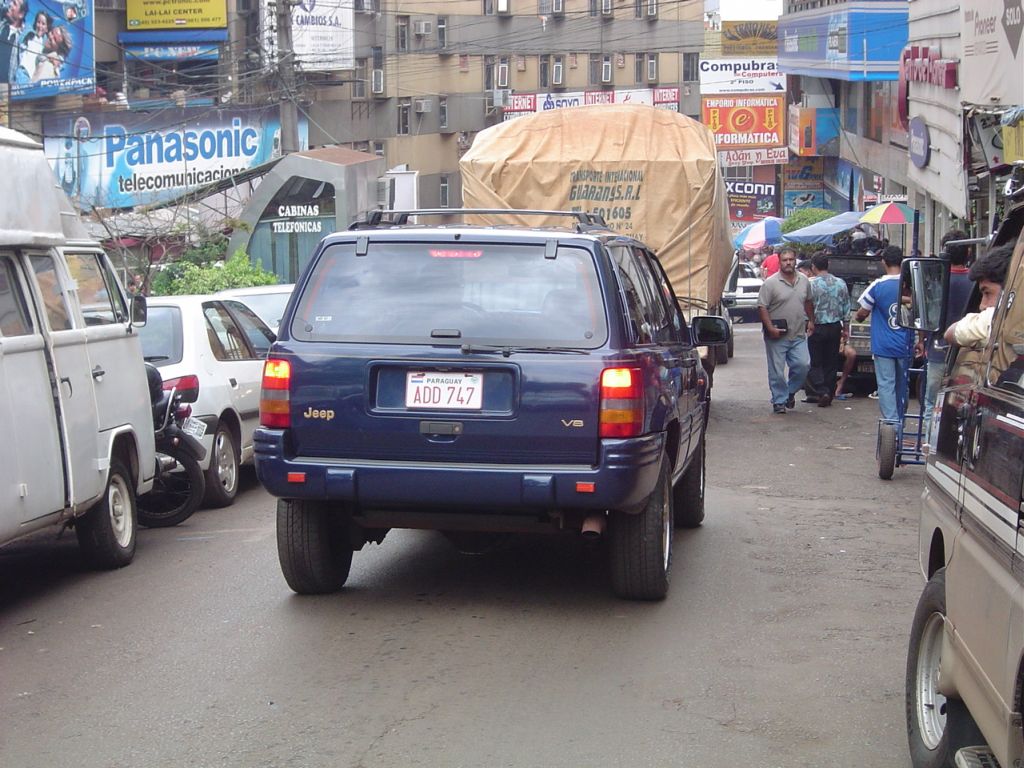
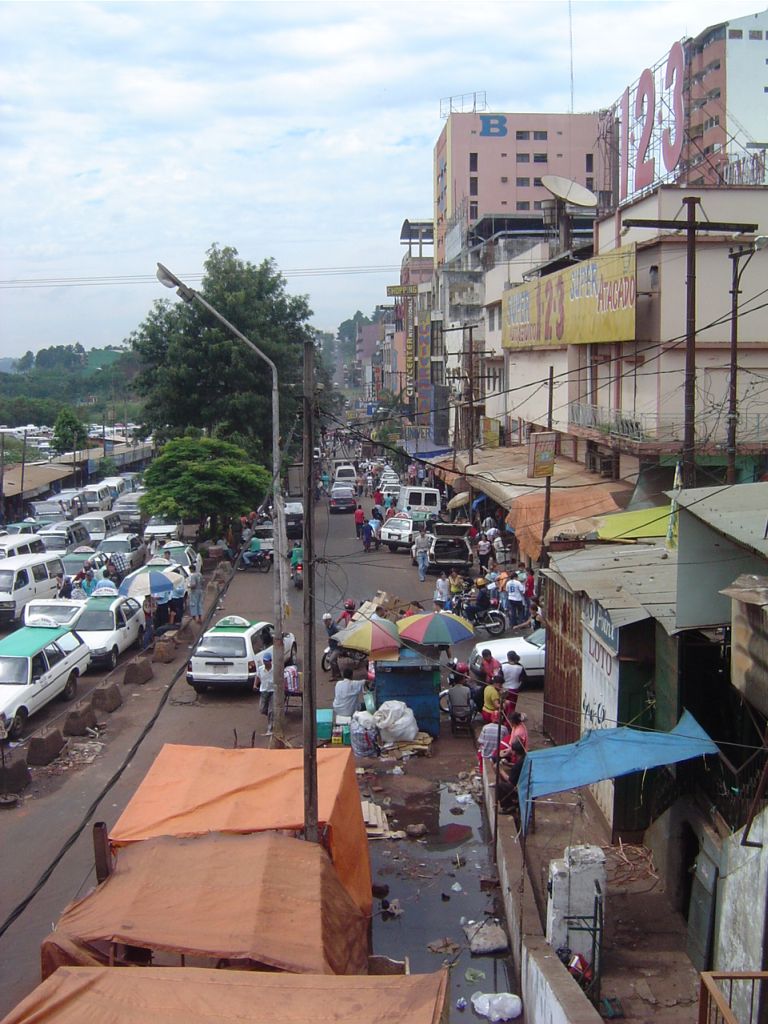
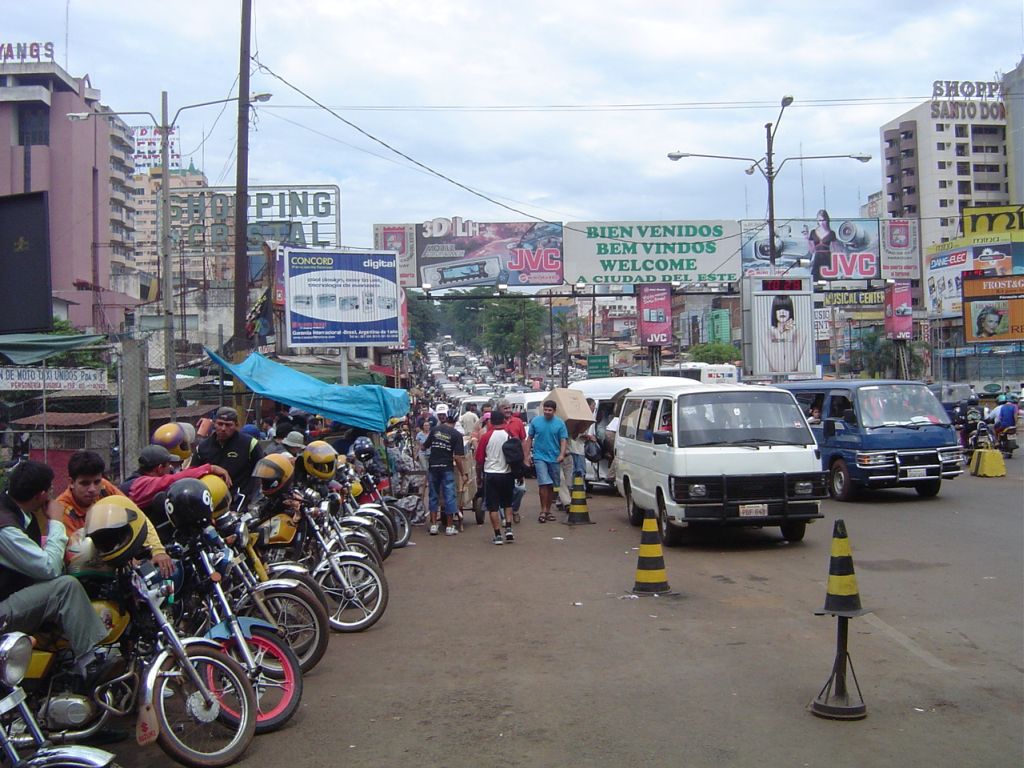
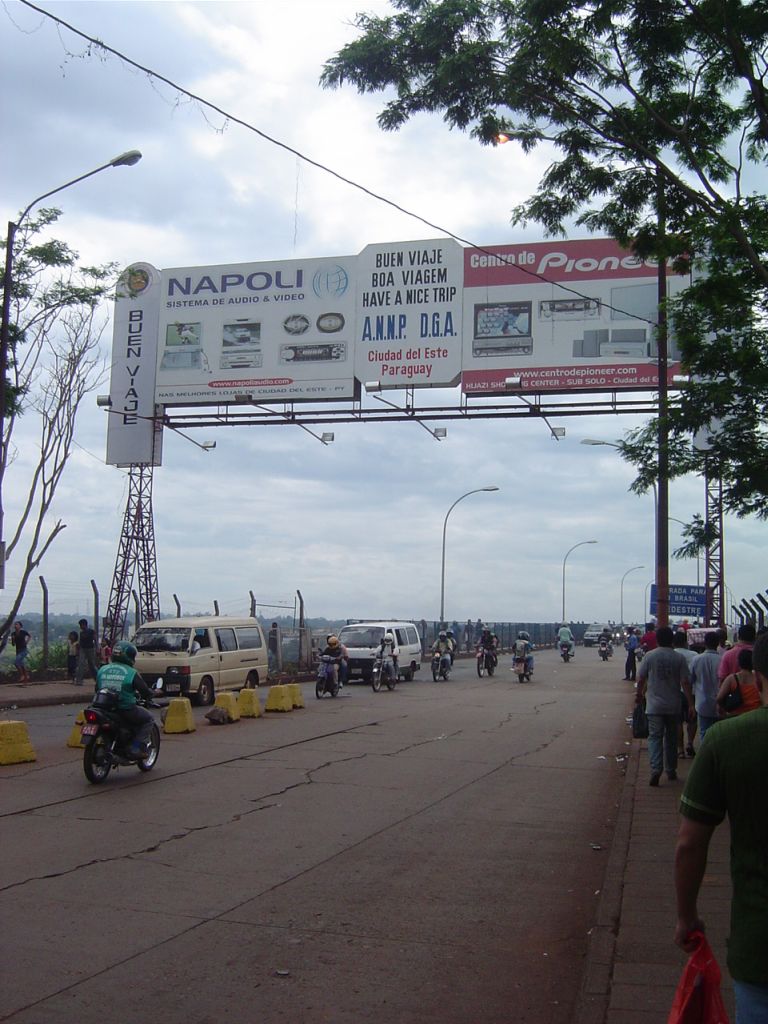
Leaving Paraguay
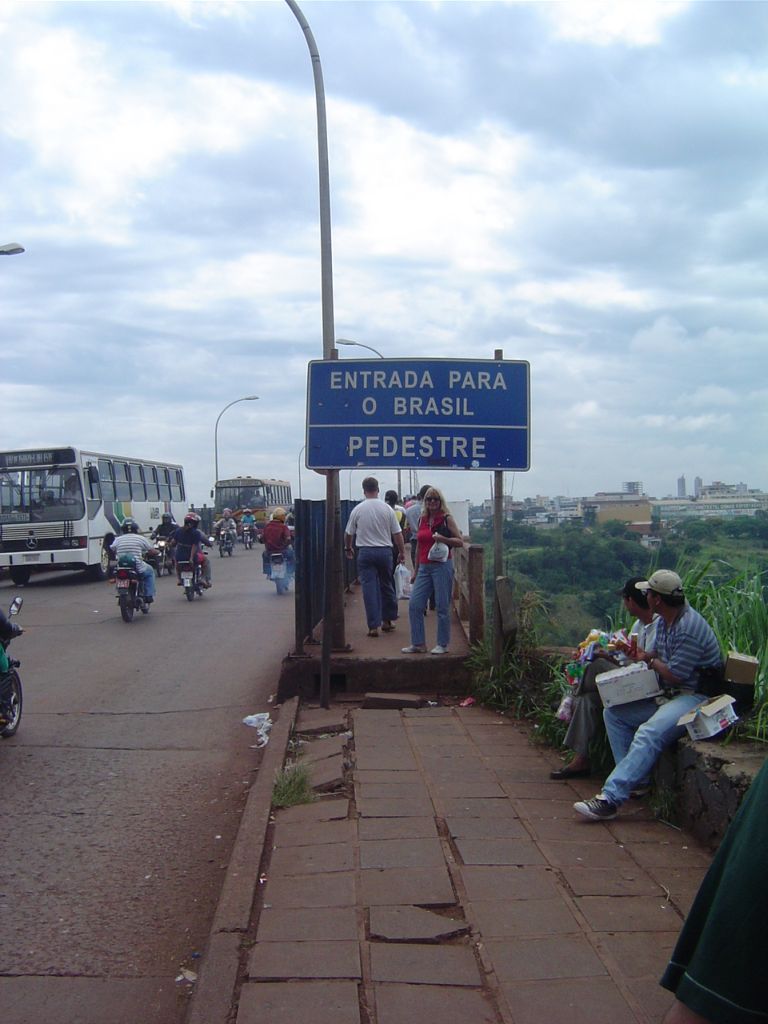
Bridge crossing the river separating Paraguay from Brasil.
Numerous large shopping bags, car tires, etc., were dropped from the bridge to the shore
on the Brasilian side of the river, casually bypassing customs inspection and fees.
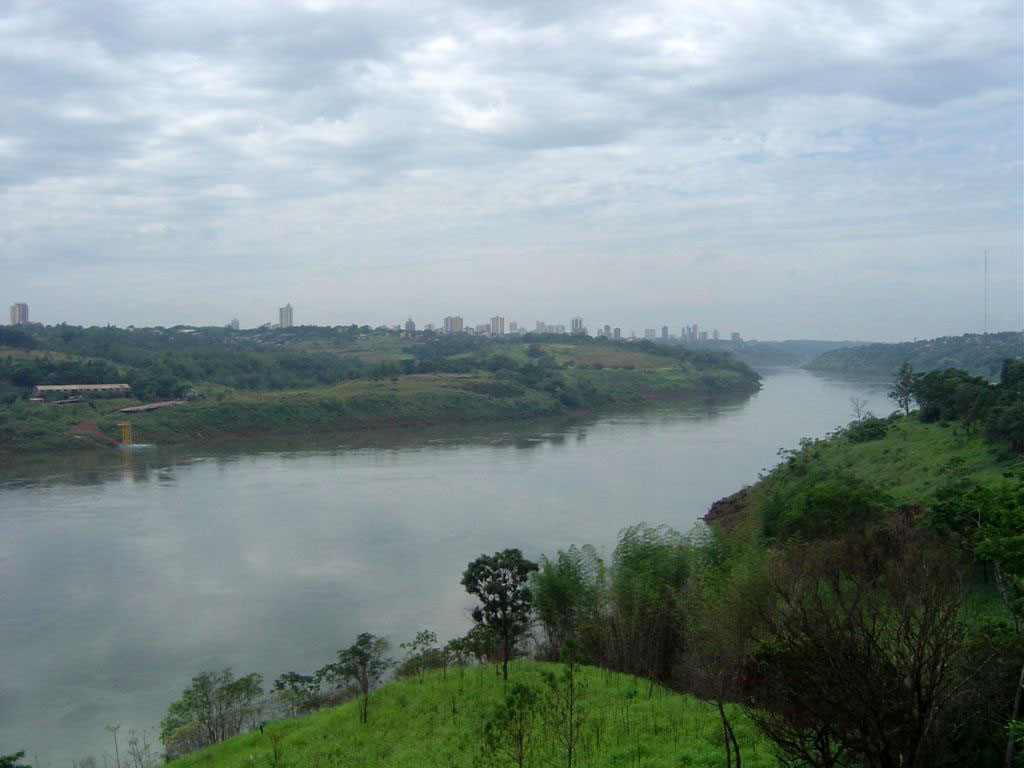
The Parana River, separating Brasil and Paraguay
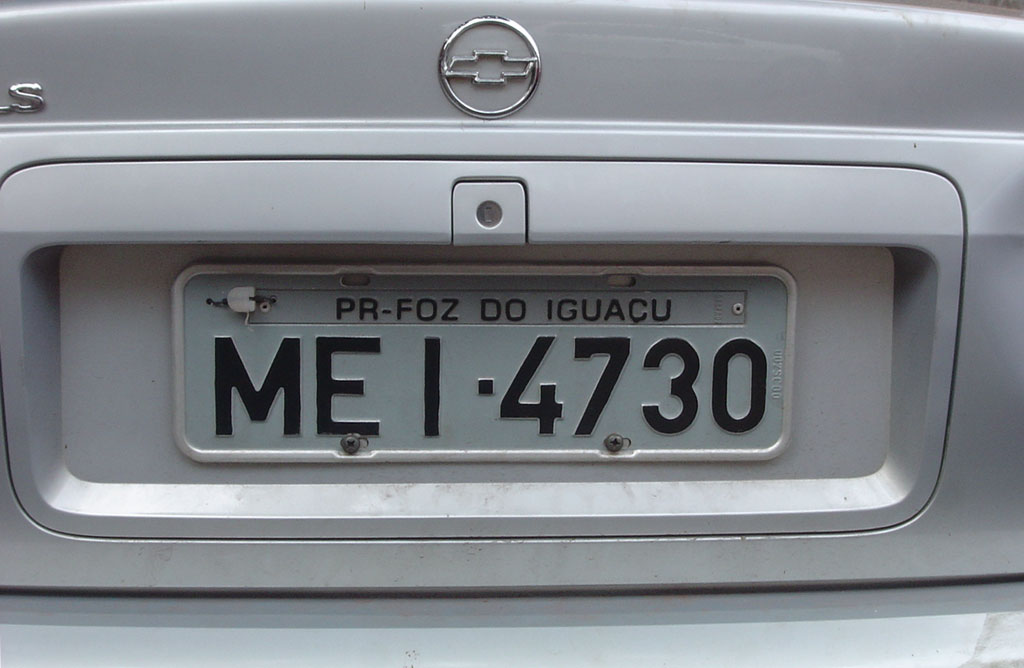
State of Parana, City of Falls of Iguazu, Brasil
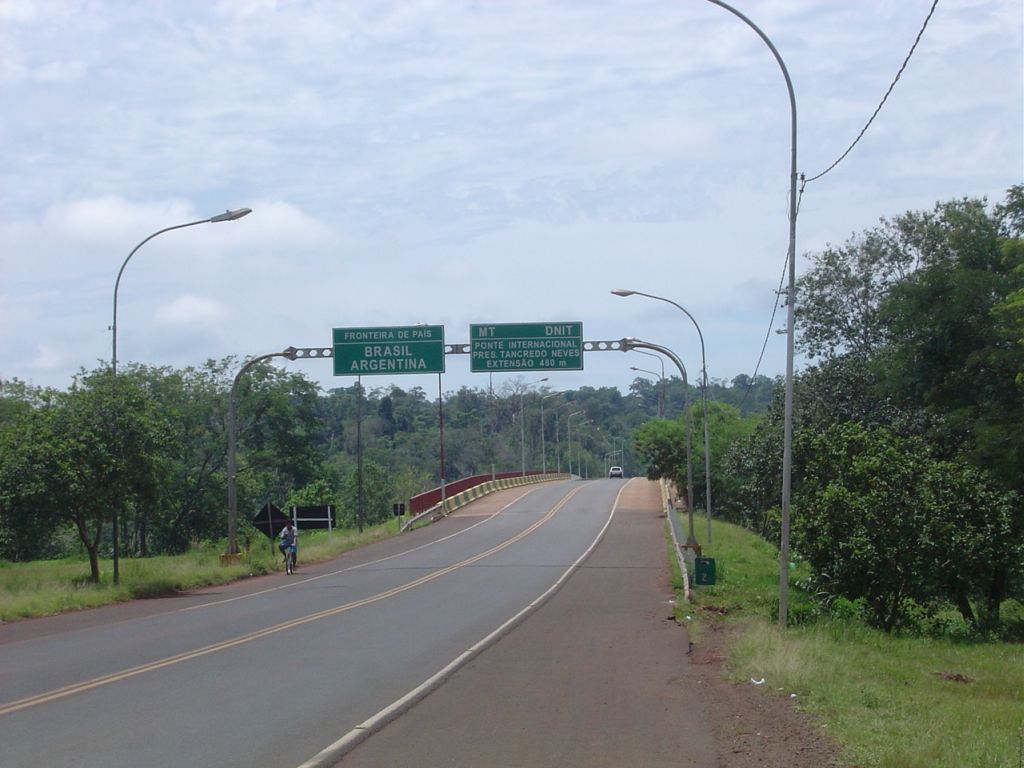
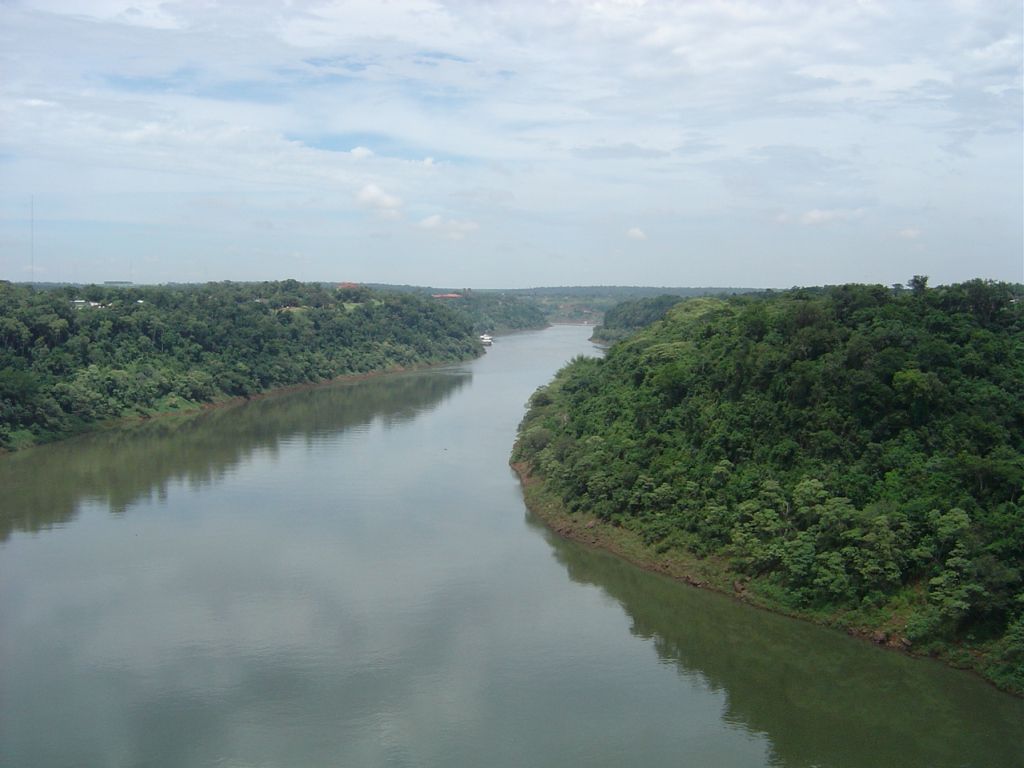
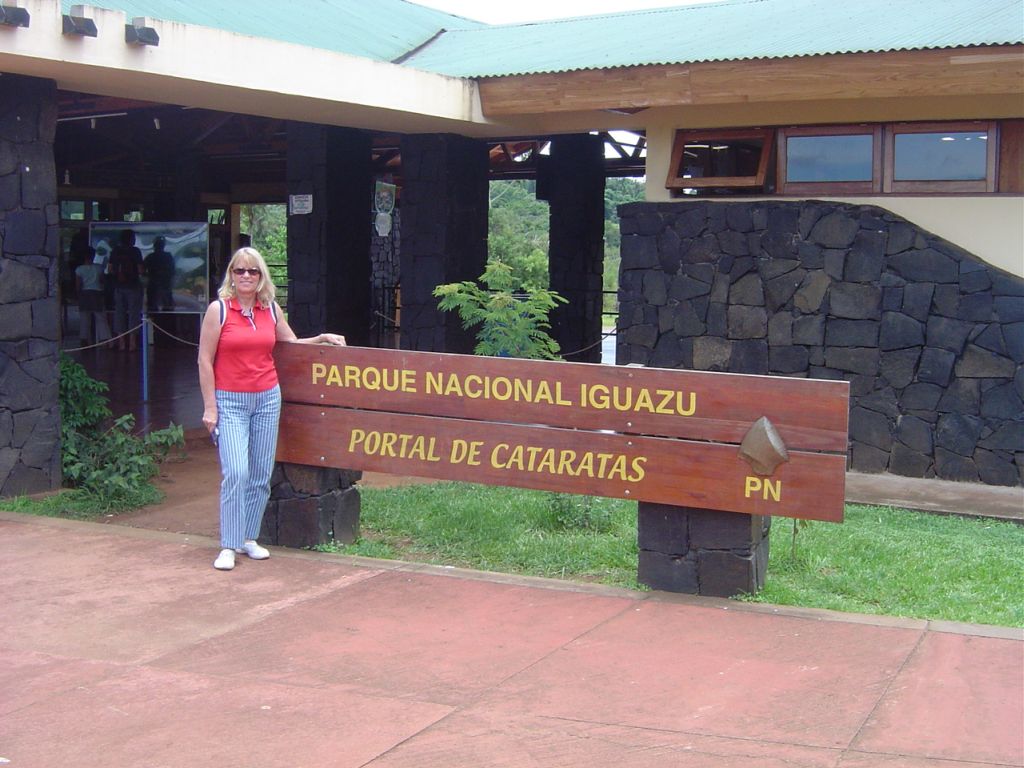
Back to the Falls, this time on the Brasilian side.
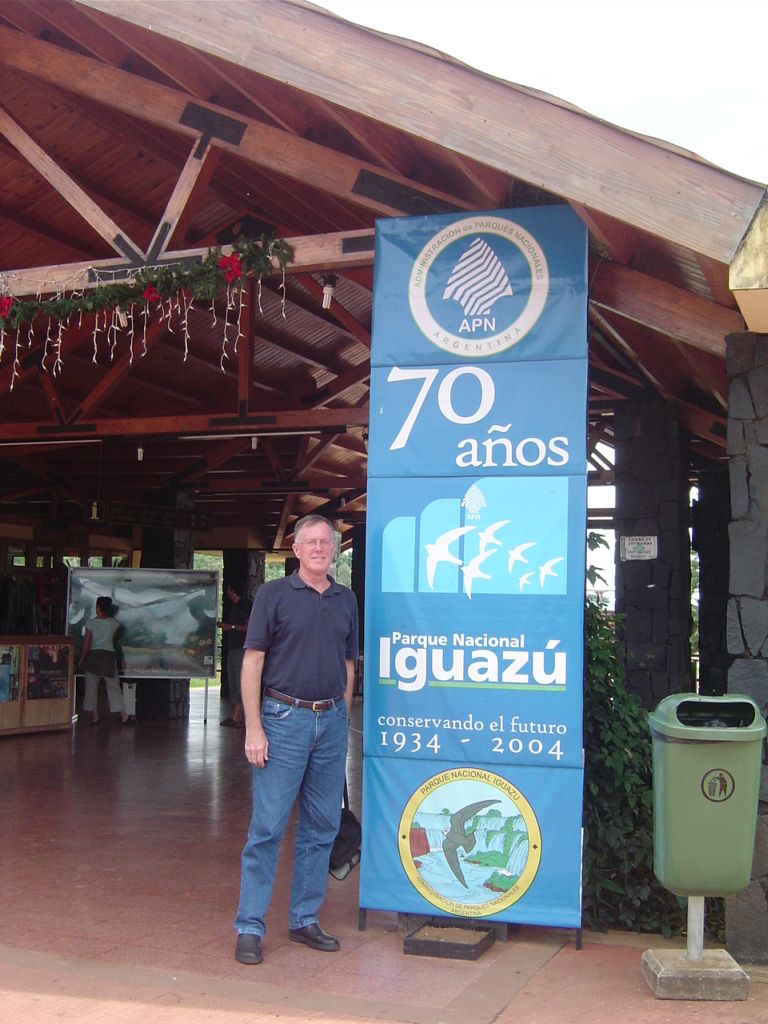
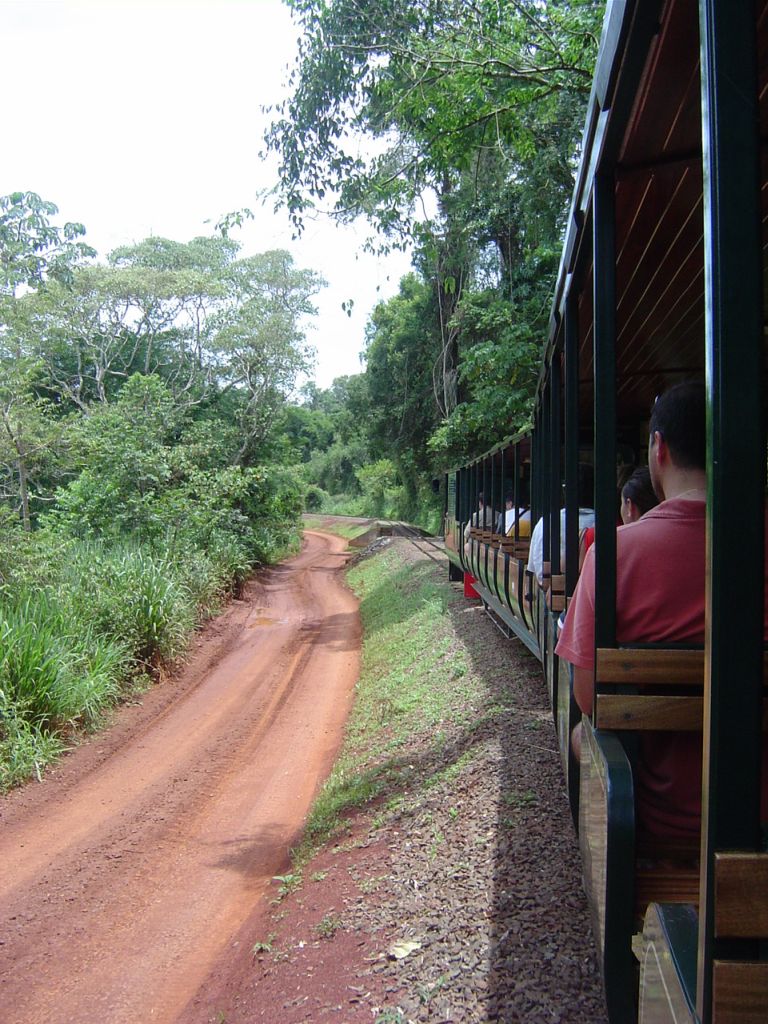
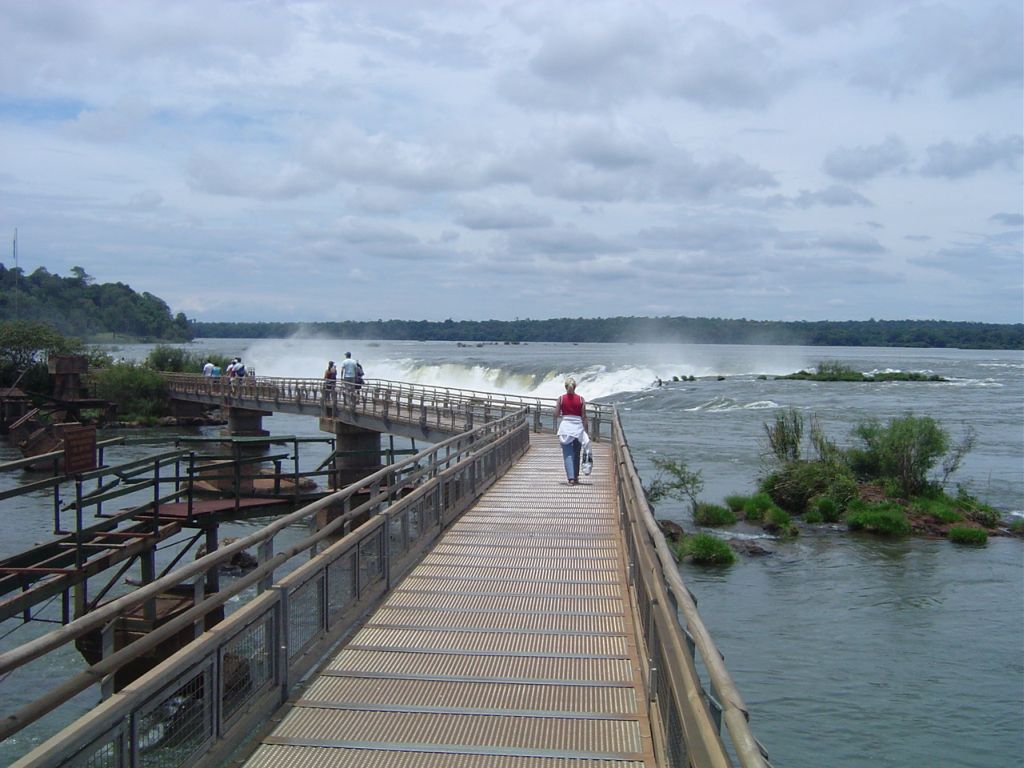
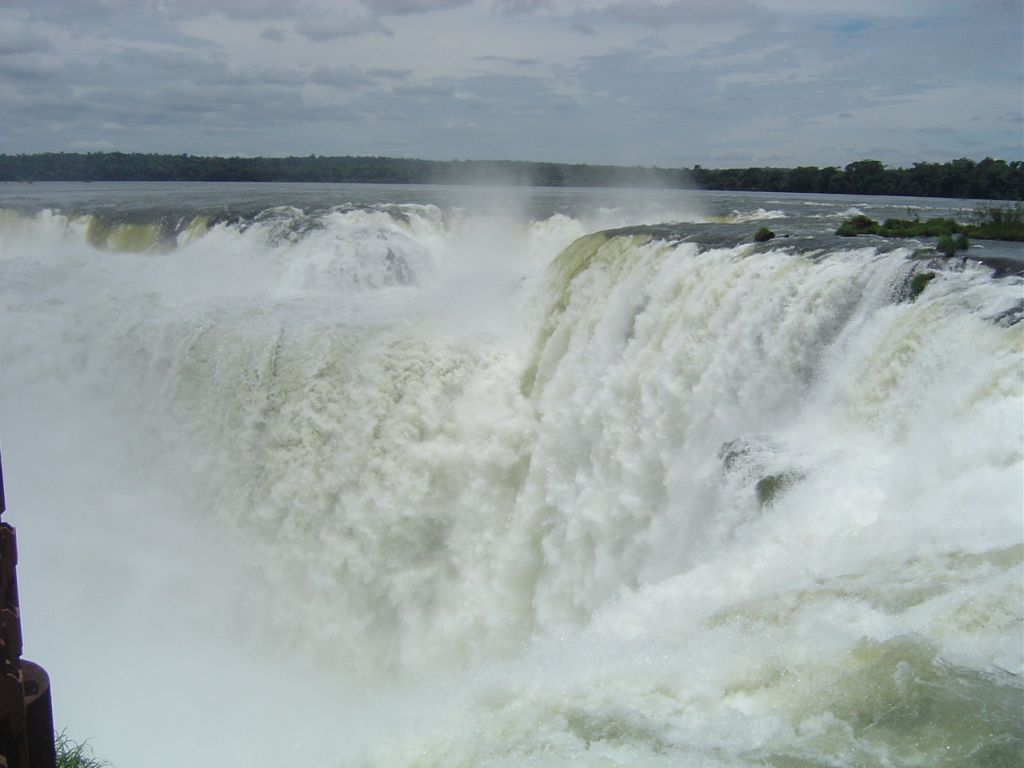
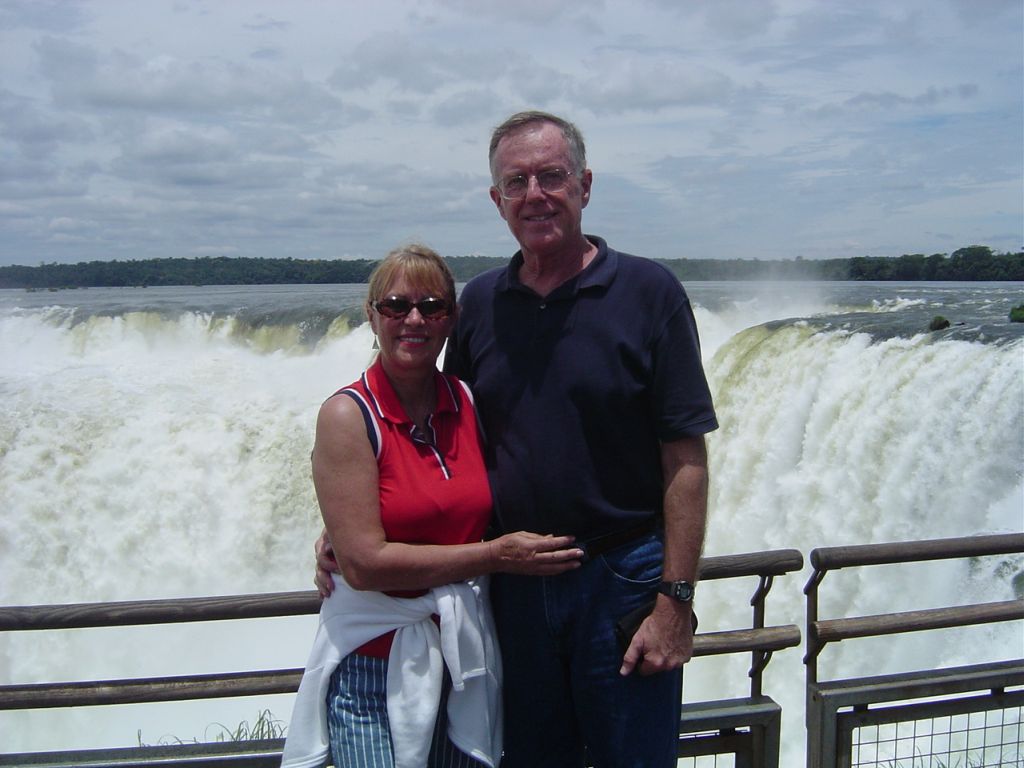
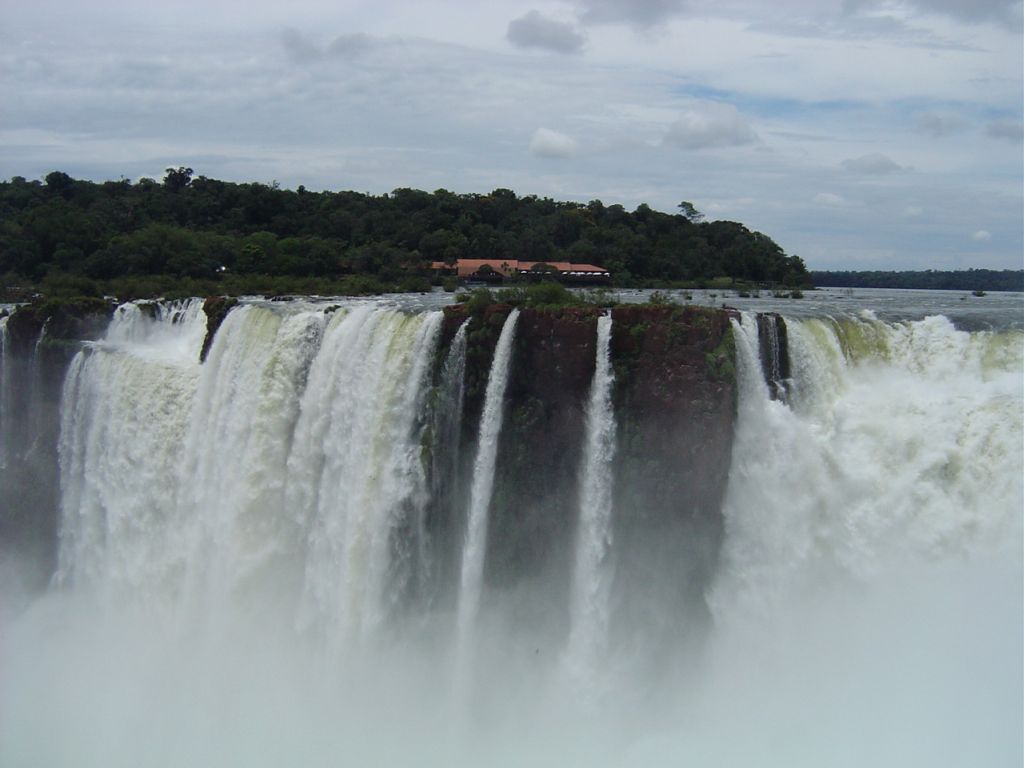
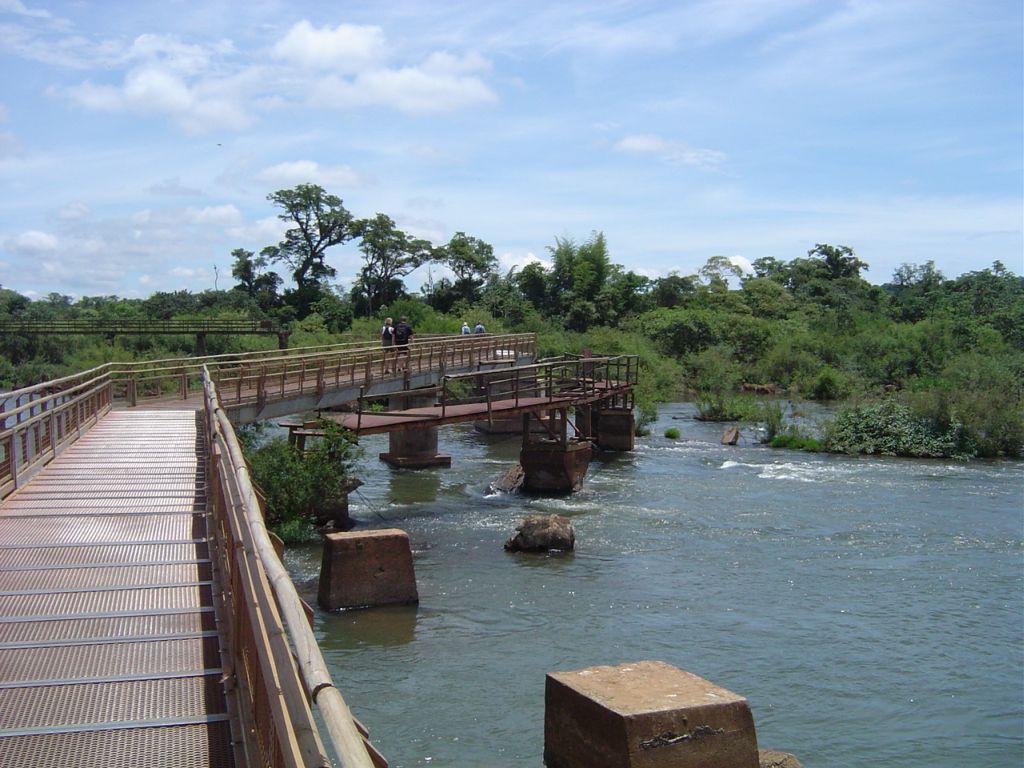
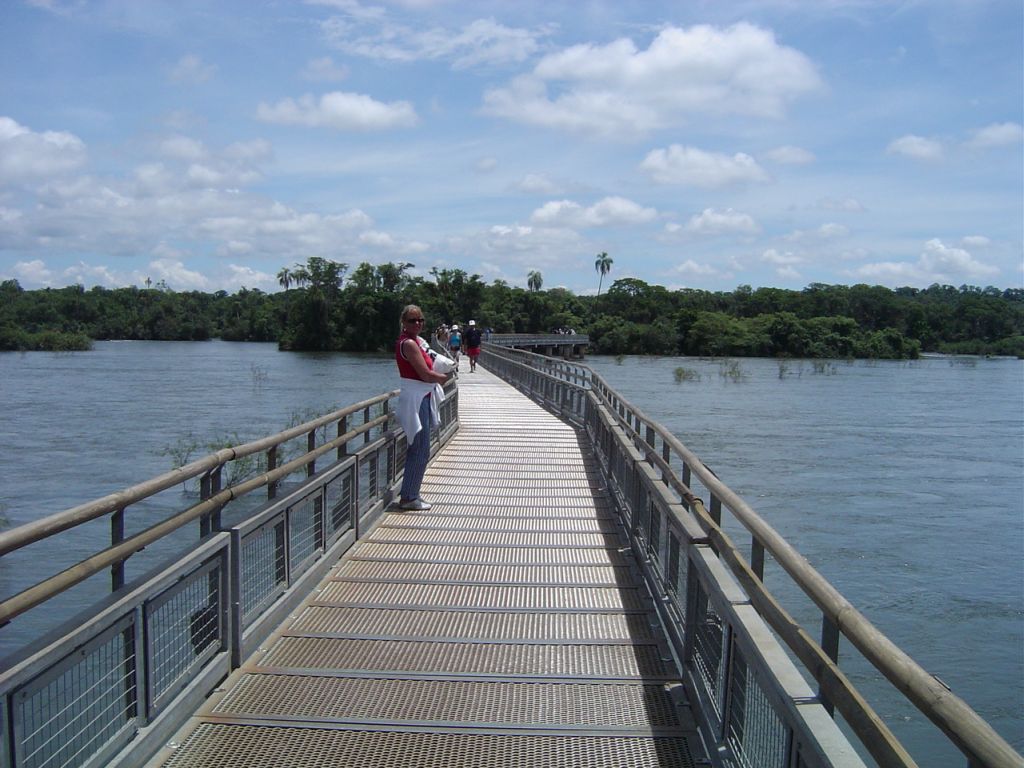
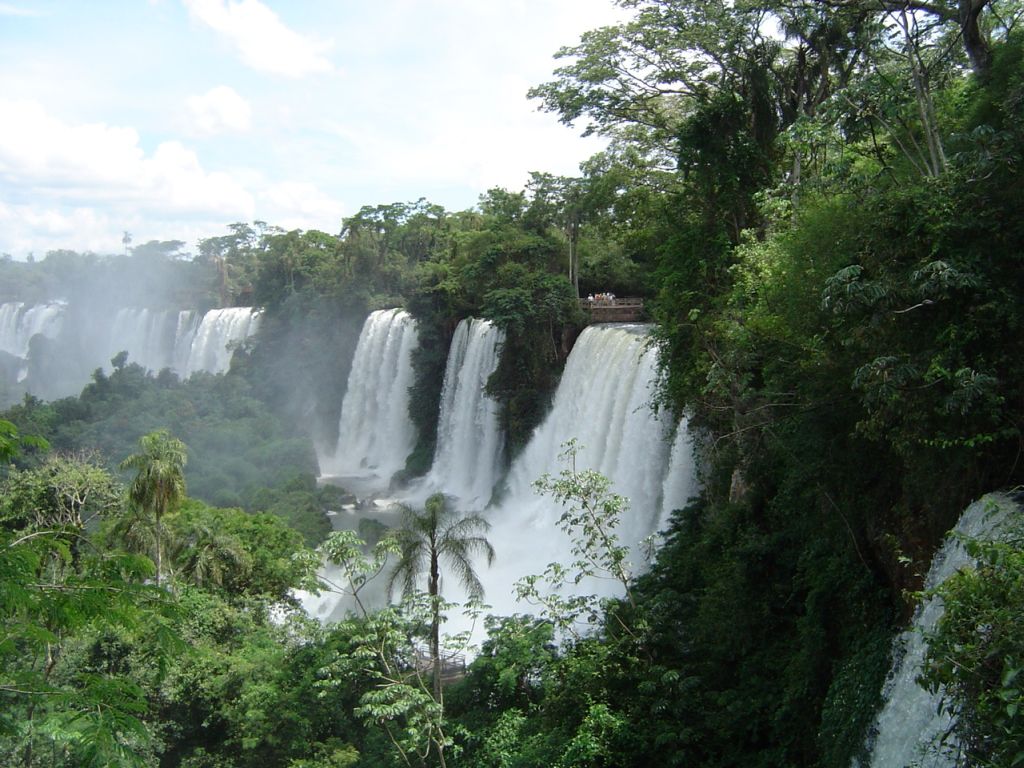
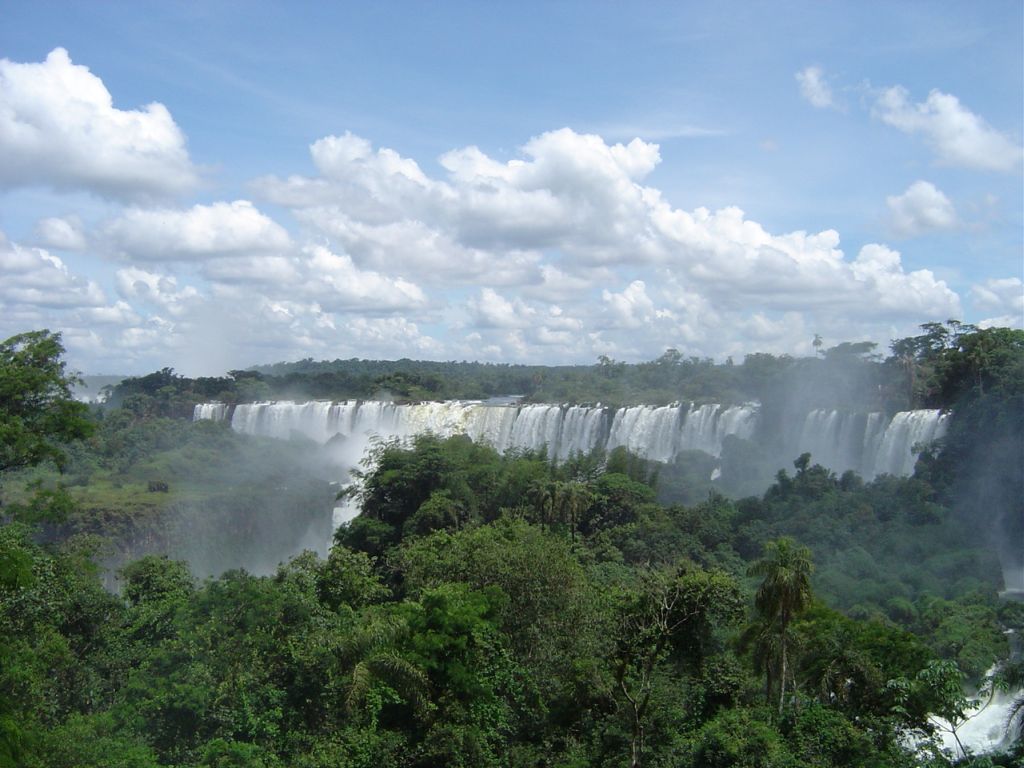
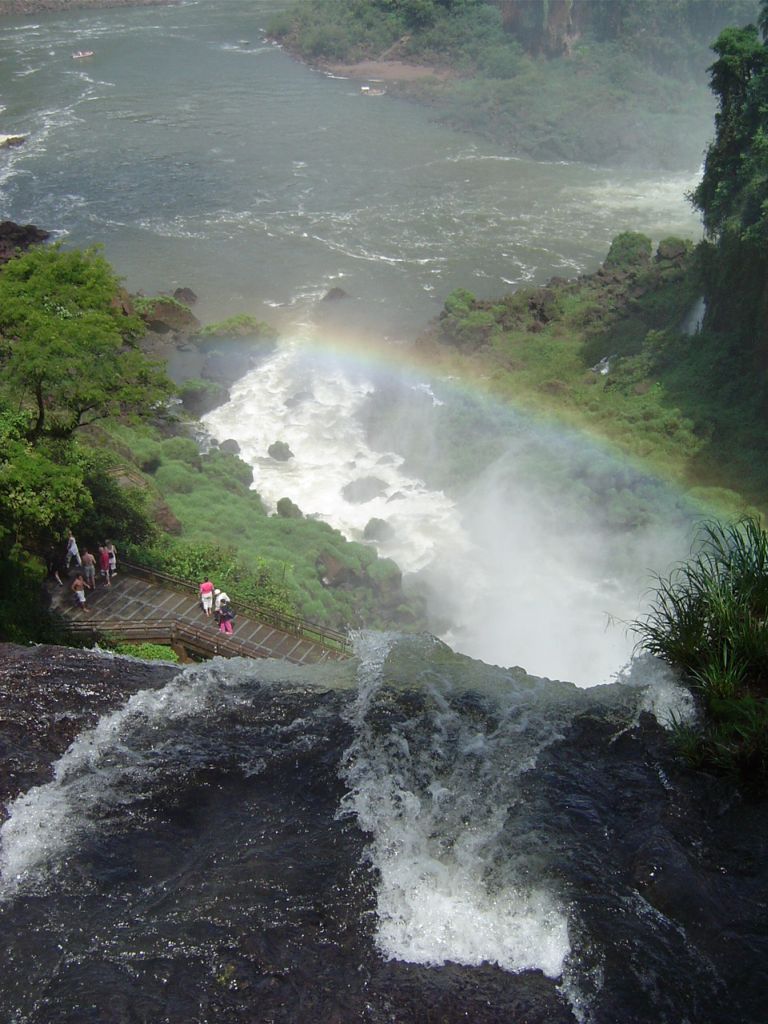
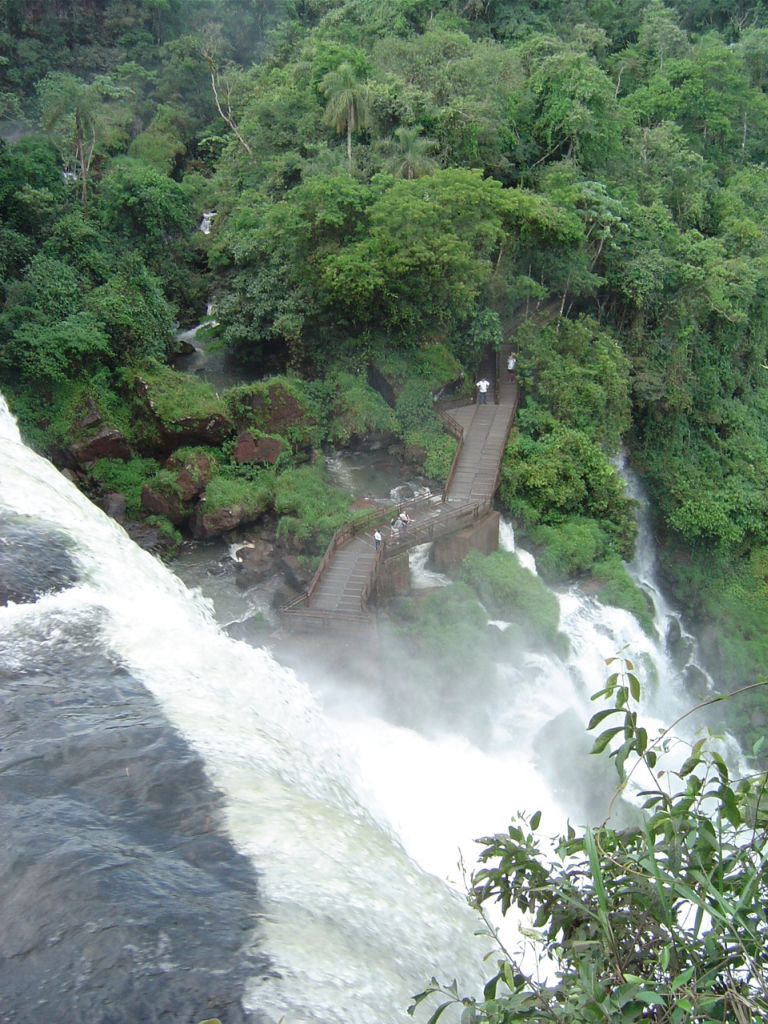
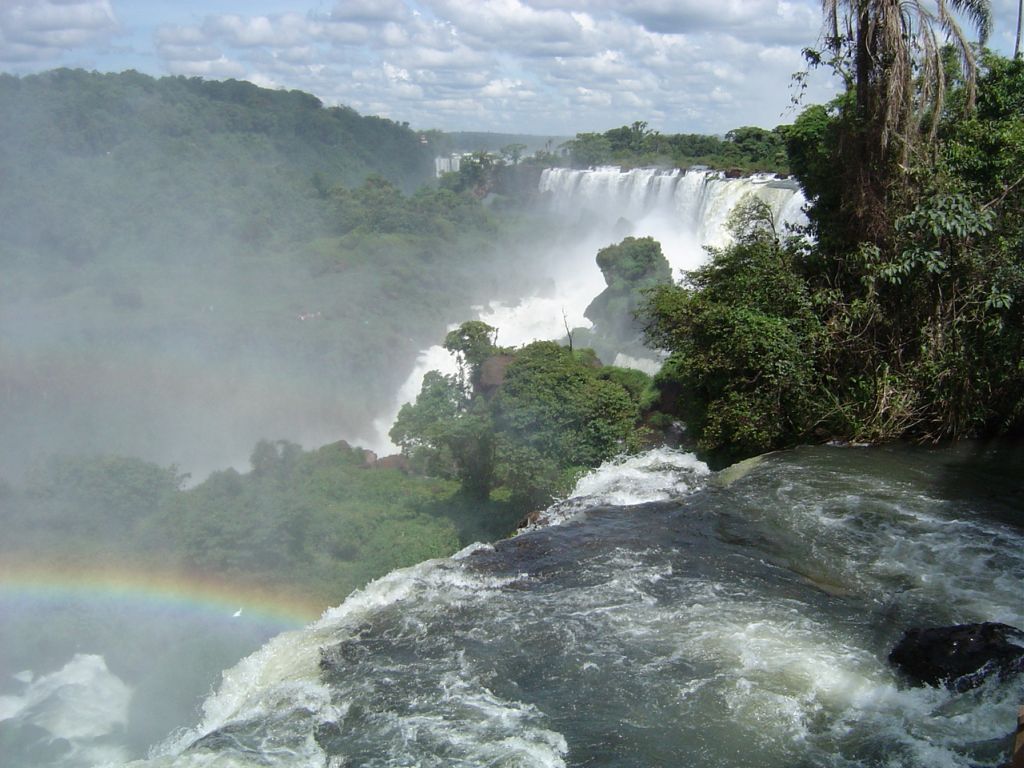
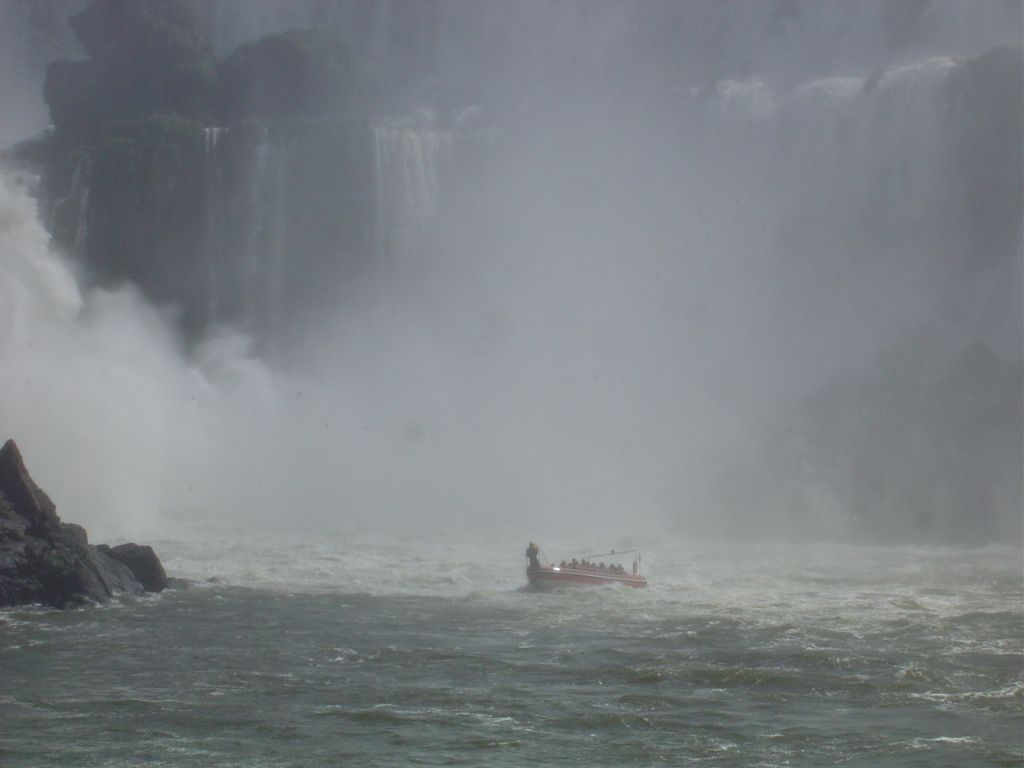
Would we be silly enough to try that?
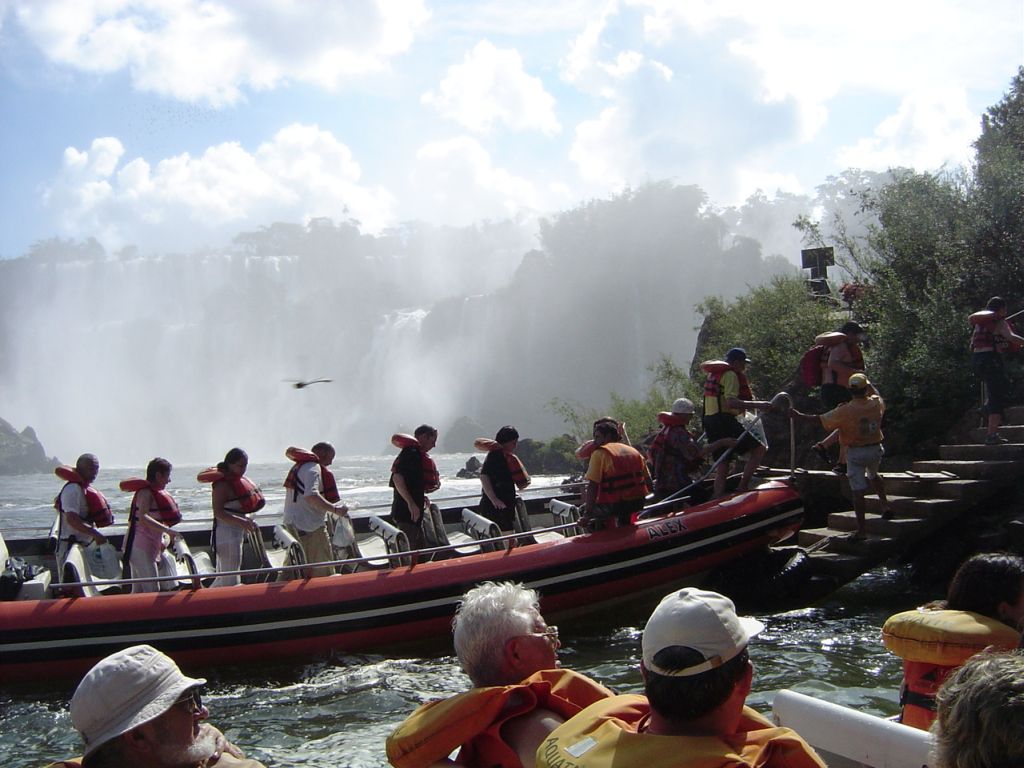
Yes, we would...
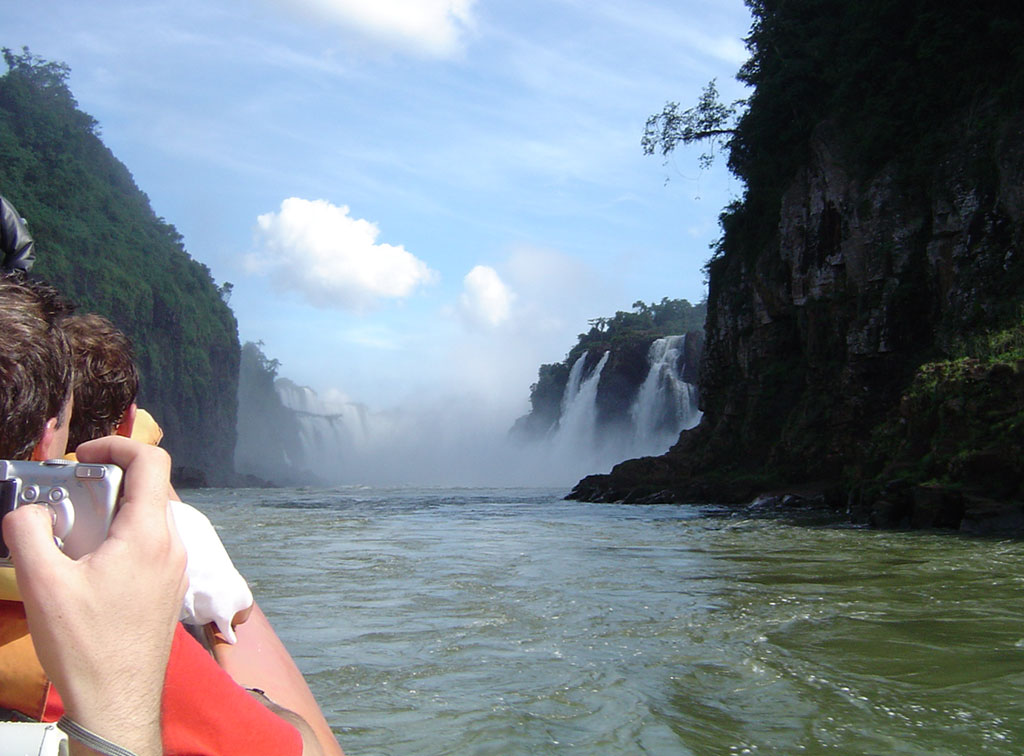
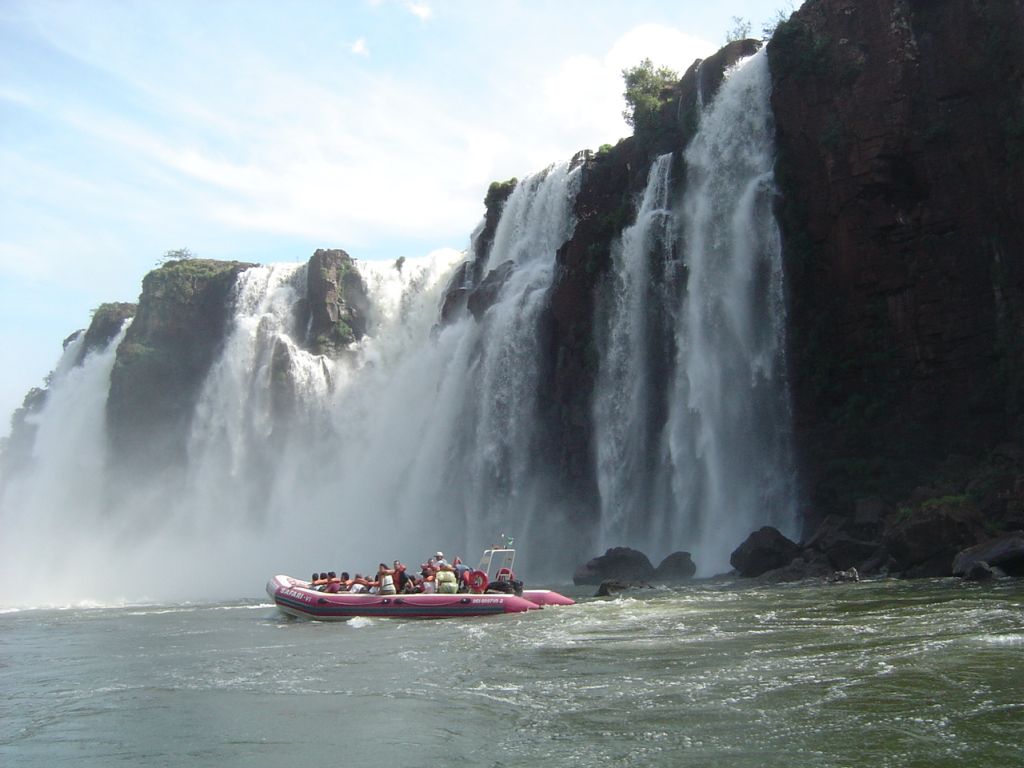
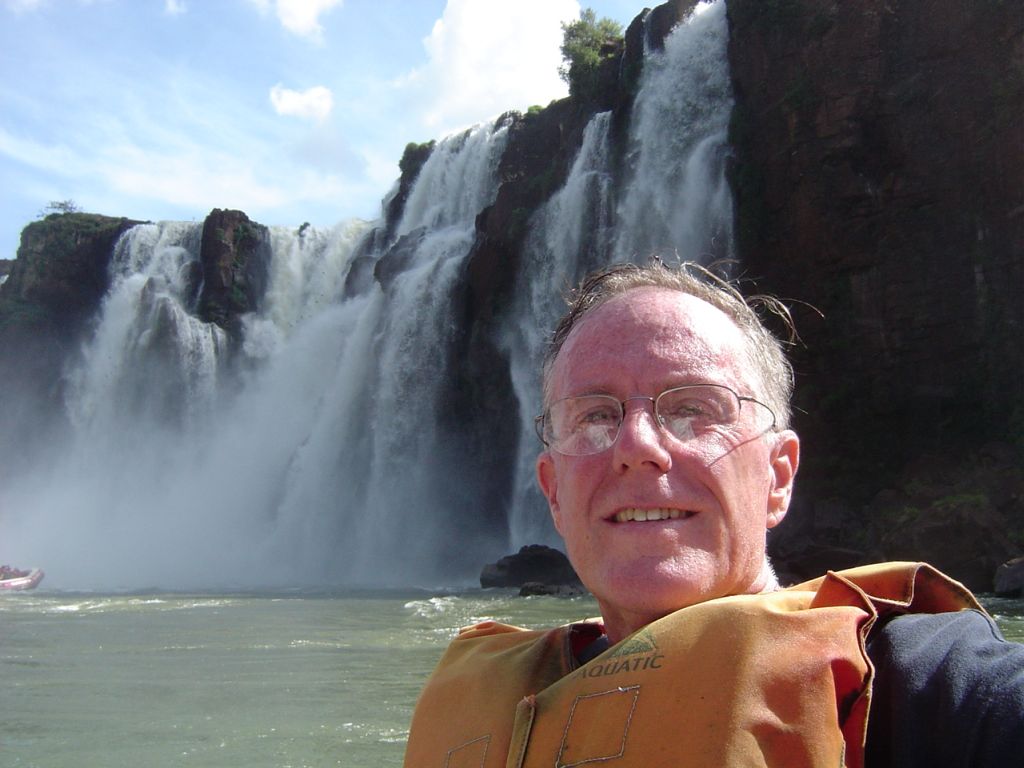
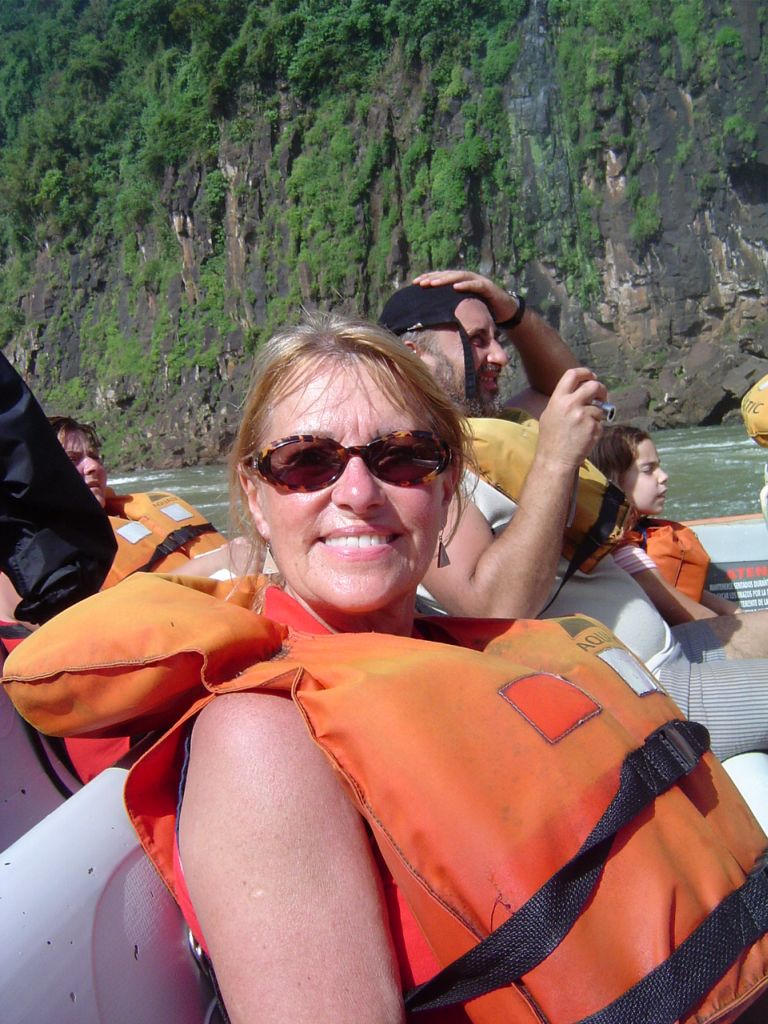
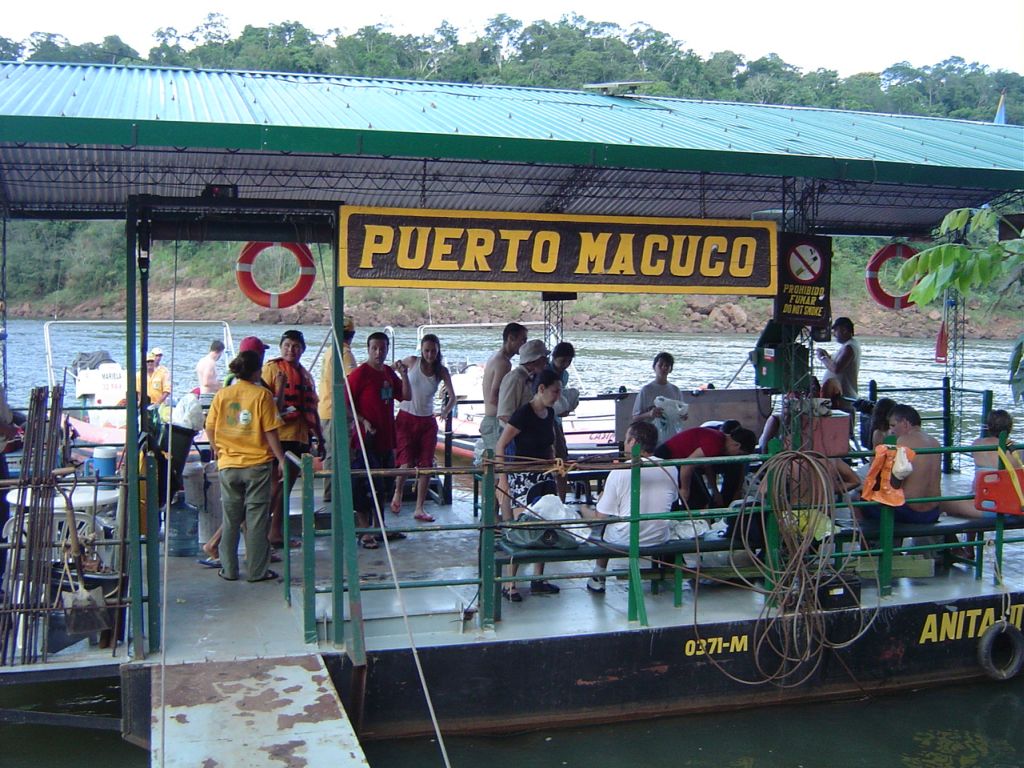
December 18th
The flight from Iguazu to Rio was a domestic flight, so an "official" entry into Brasil was required on our way to the airport. This required photographs and finger-prints by Brasilian Immigration, in retaliation for finger-printing required of Brasilians entering the US.
After loading our two large suitcases onto the scale at the Varig counter, we feared how much we would be charged when they asked us to weigh our carry-on luggage as well. The limit for carry-ons was 5 kilos each and we had 18 kilos each. No problem though. They checked them through to Rio without blinking an eye.
Rio's airport was a long cab ride from the Hotel Plaza Copacabana, a few blocks from Copacabana Beach.
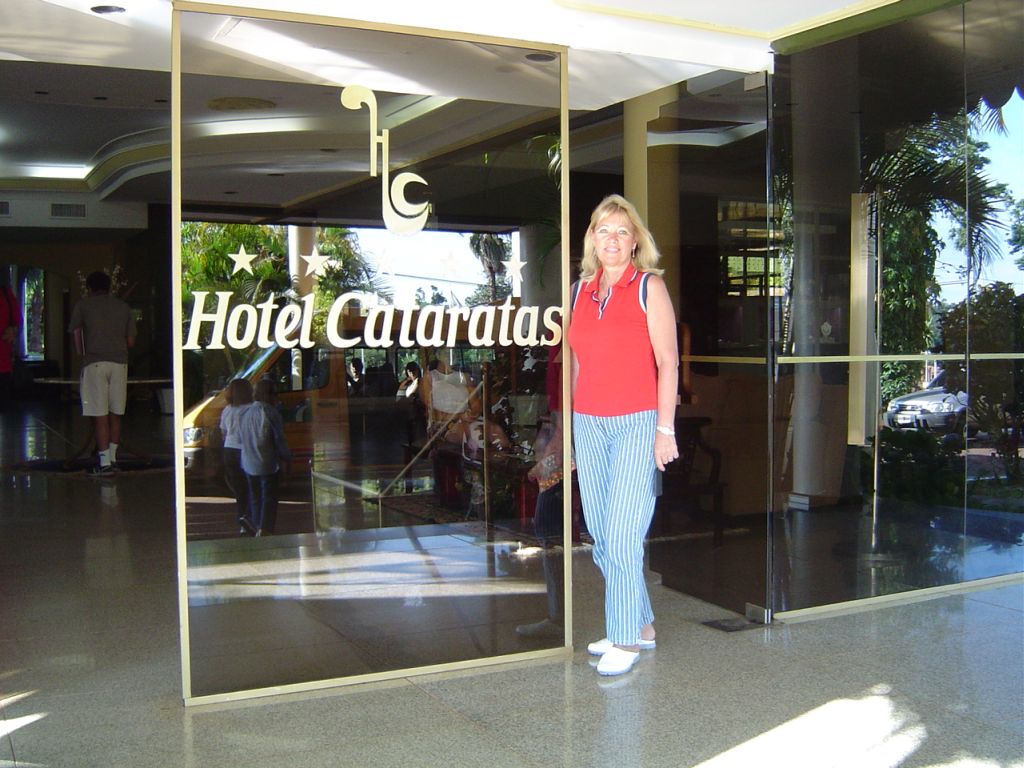
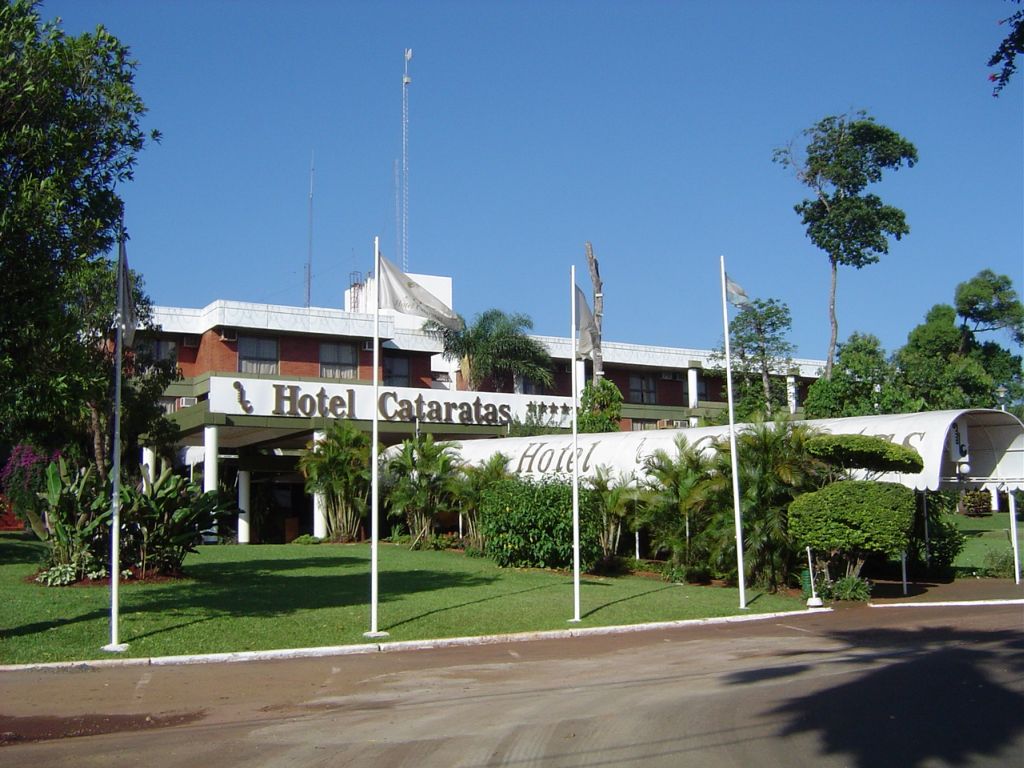
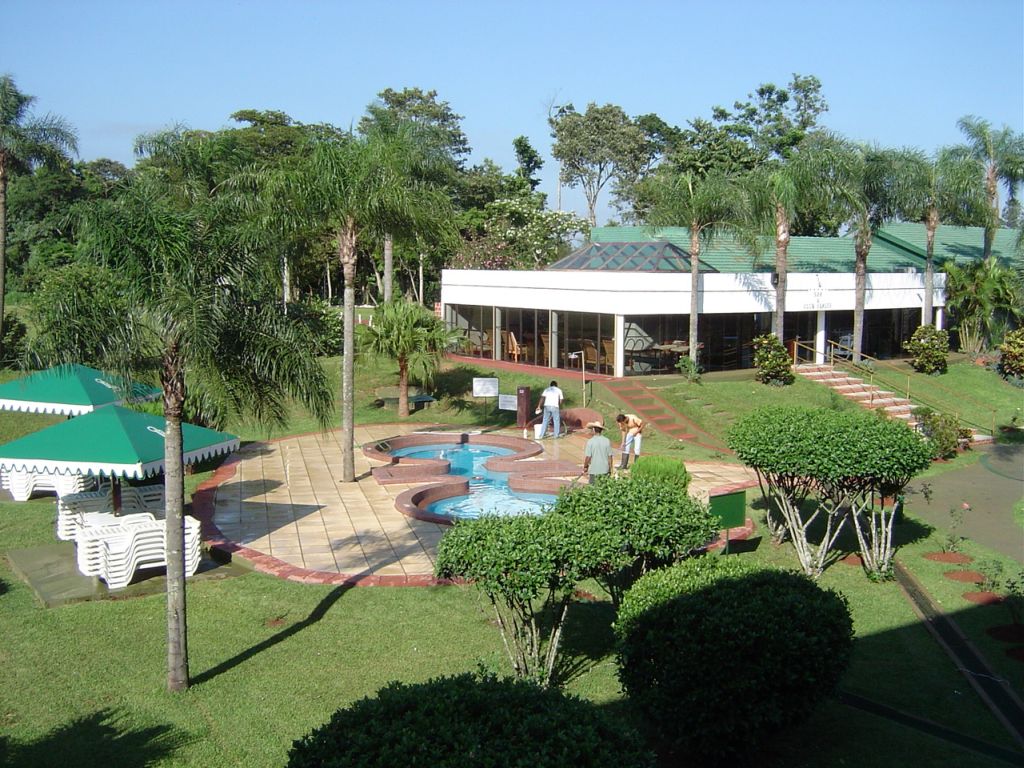
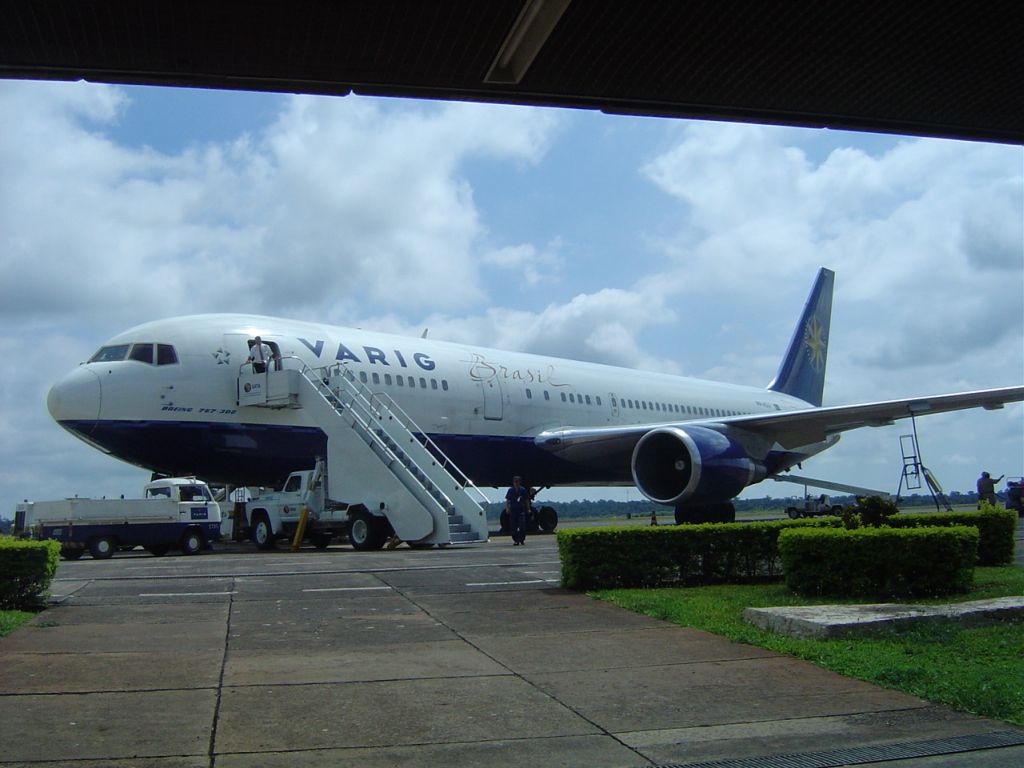
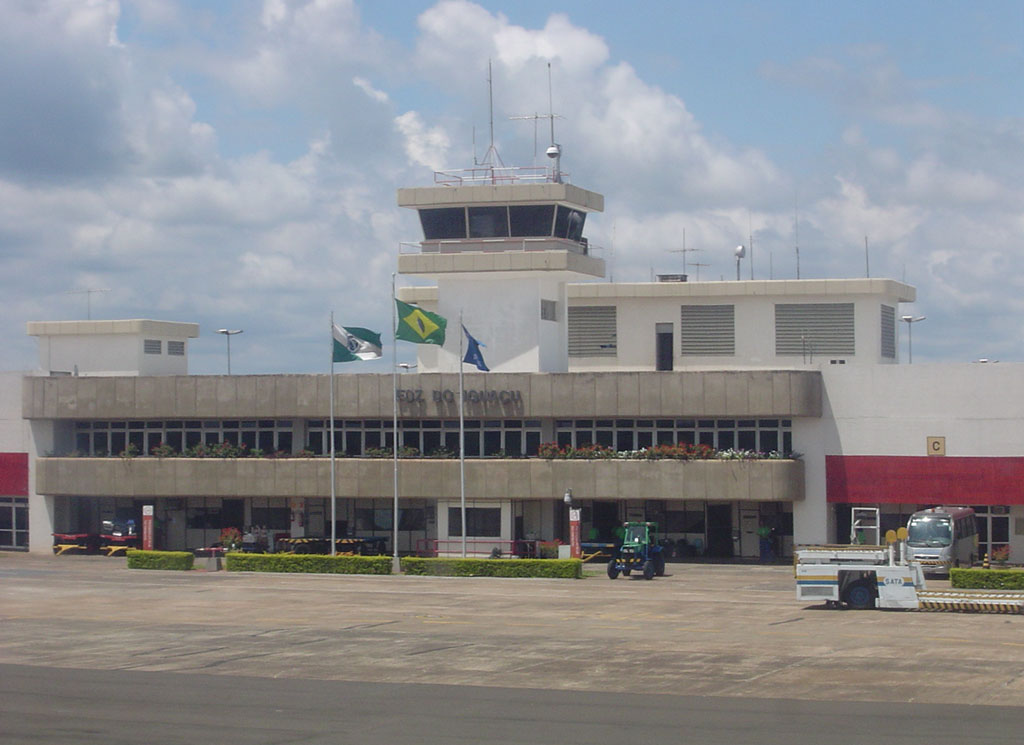
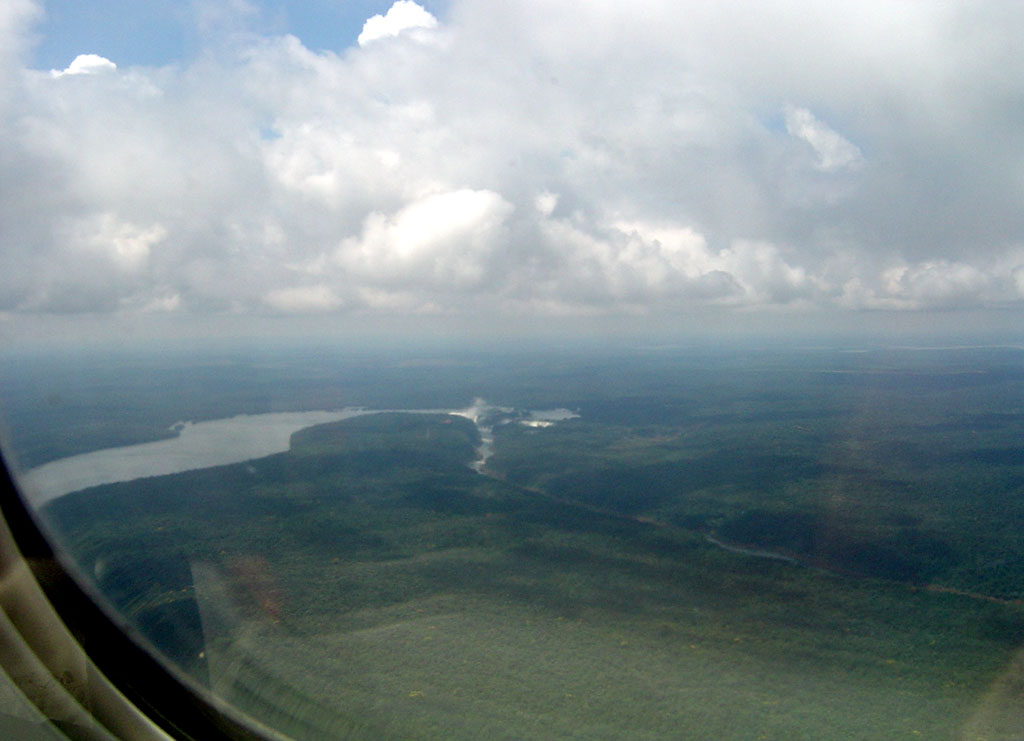
From the air, the falls are not impressive.
All you can see is a little mist rising